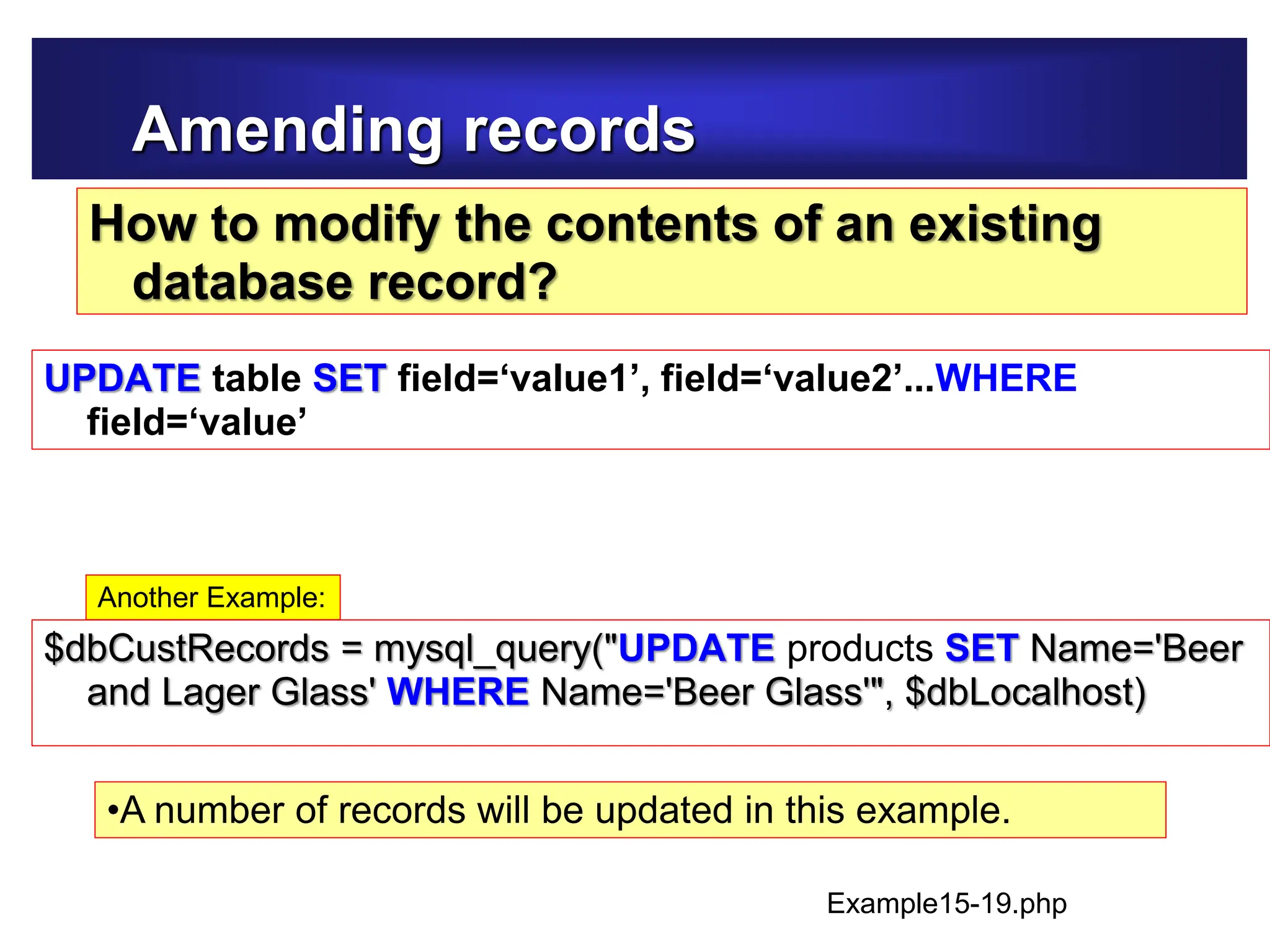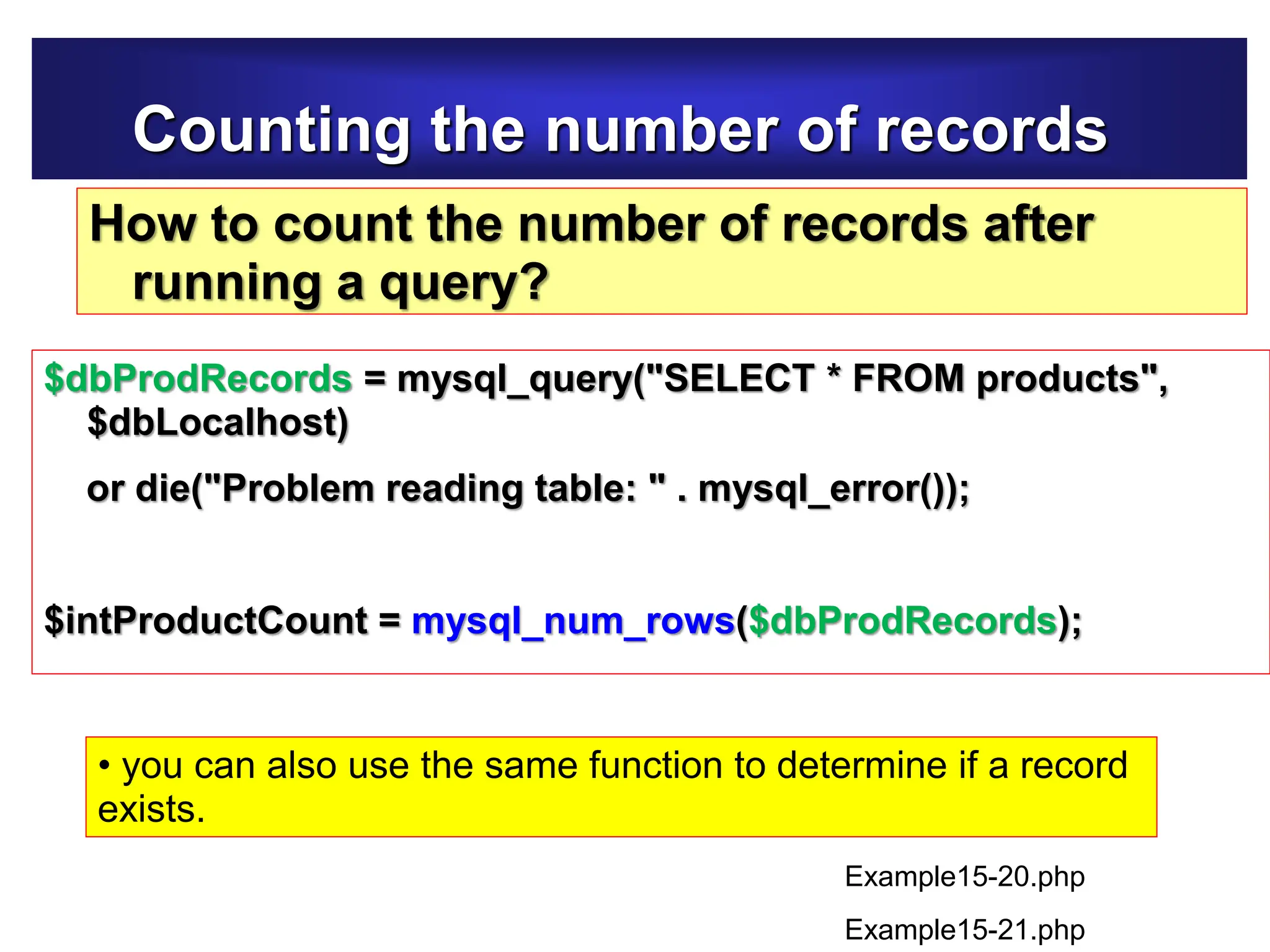This document discusses managing dynamic web content through databases. It explains that databases allow content to be programmatically generated and easier to manage over time compared to file-based systems. It provides an overview of key database concepts like tables, fields, queries, and the benefits of relational databases. It also introduces phpMyAdmin as a tool for visually managing databases and provides examples of connecting to a MySQL database from PHP scripts to perform operations like selecting, inserting, and retrieving data.
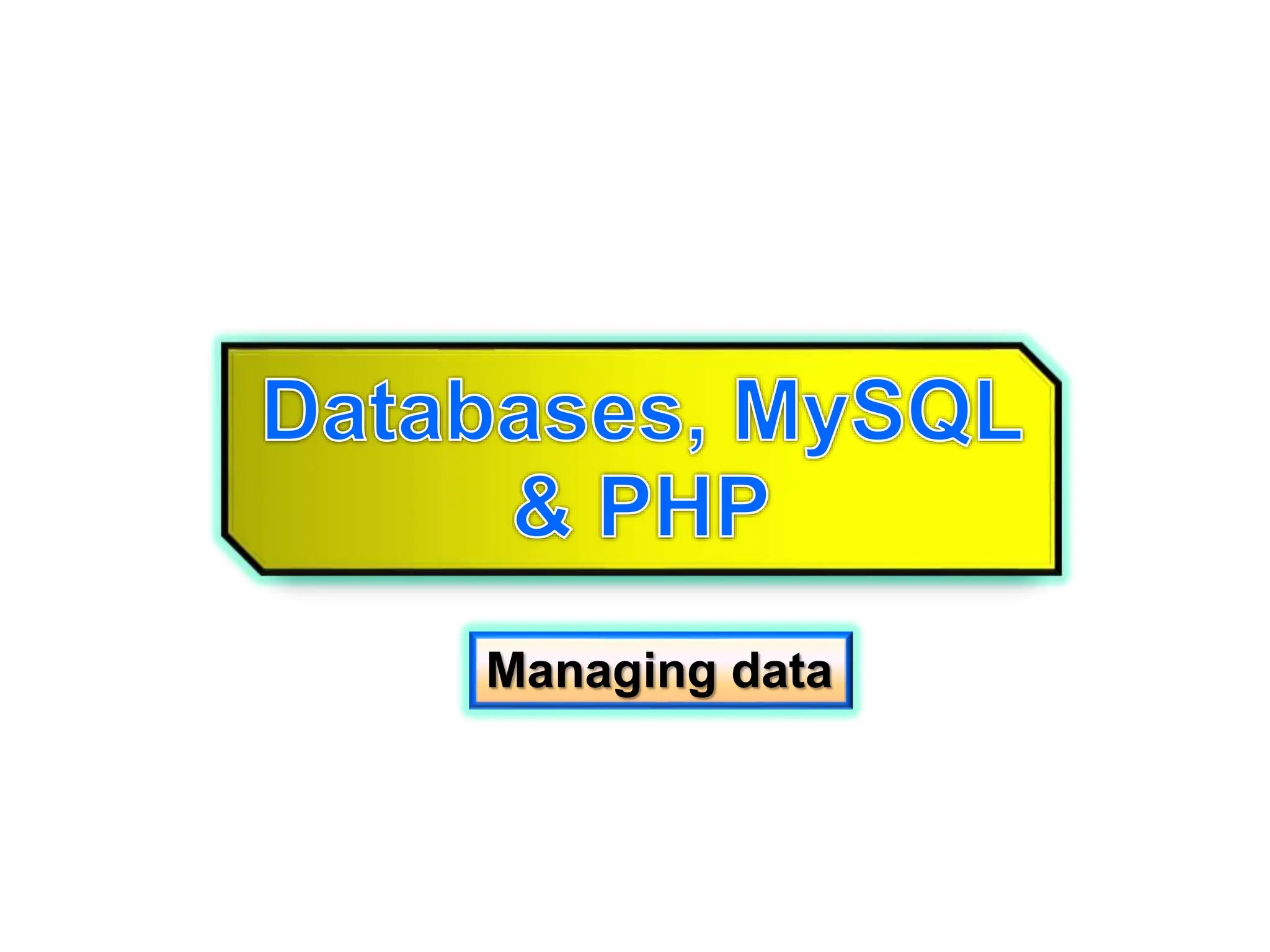
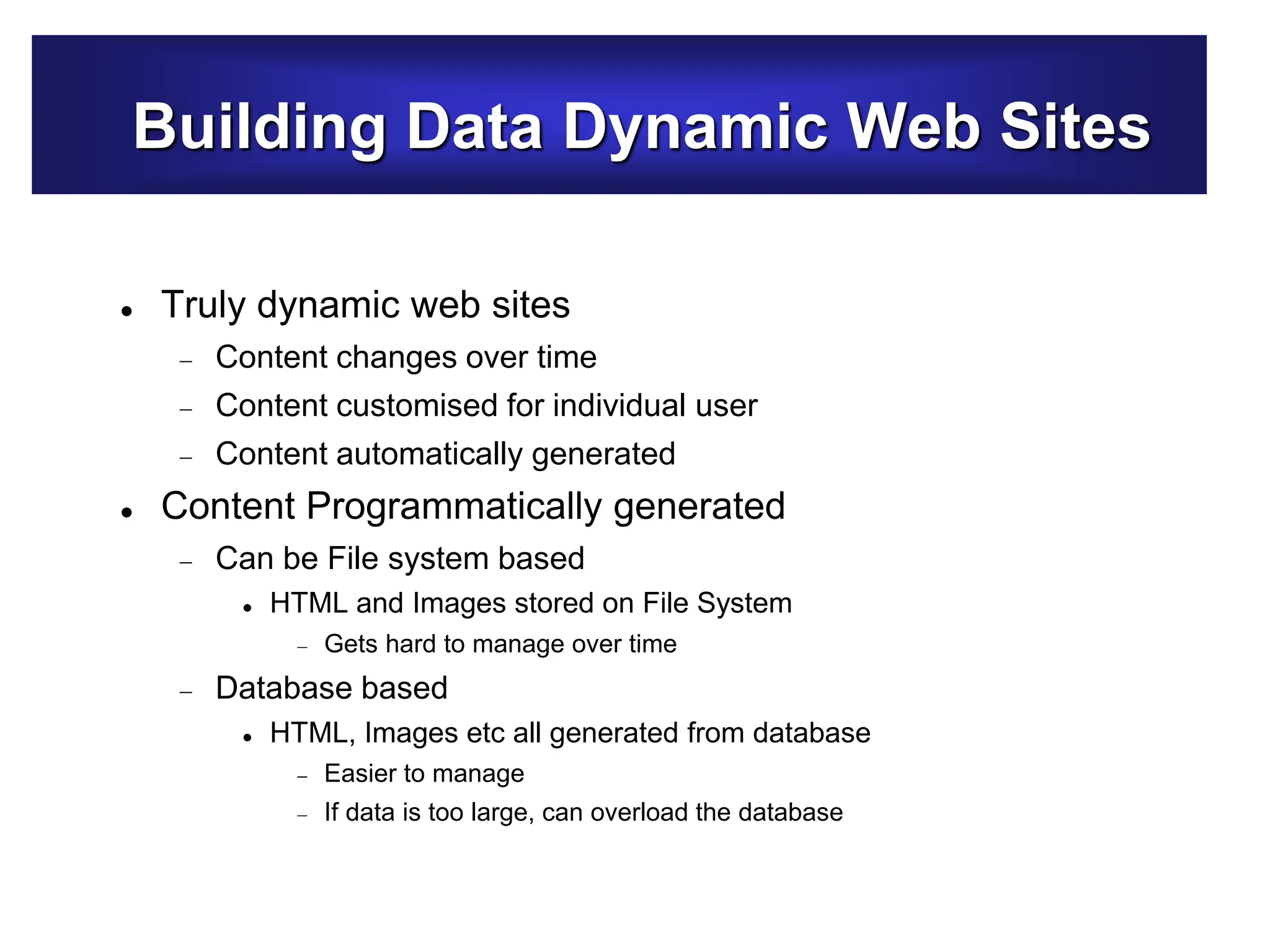
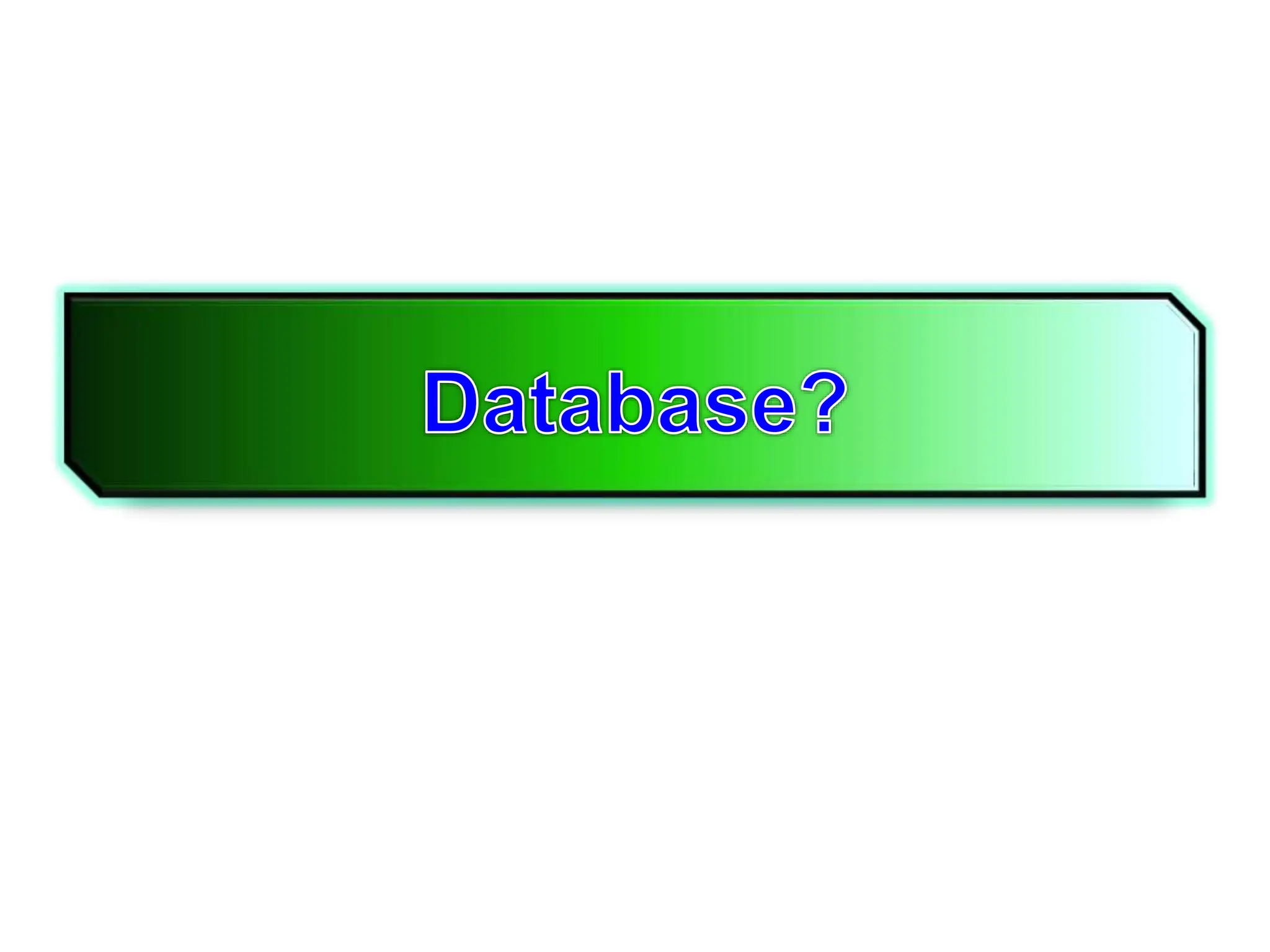
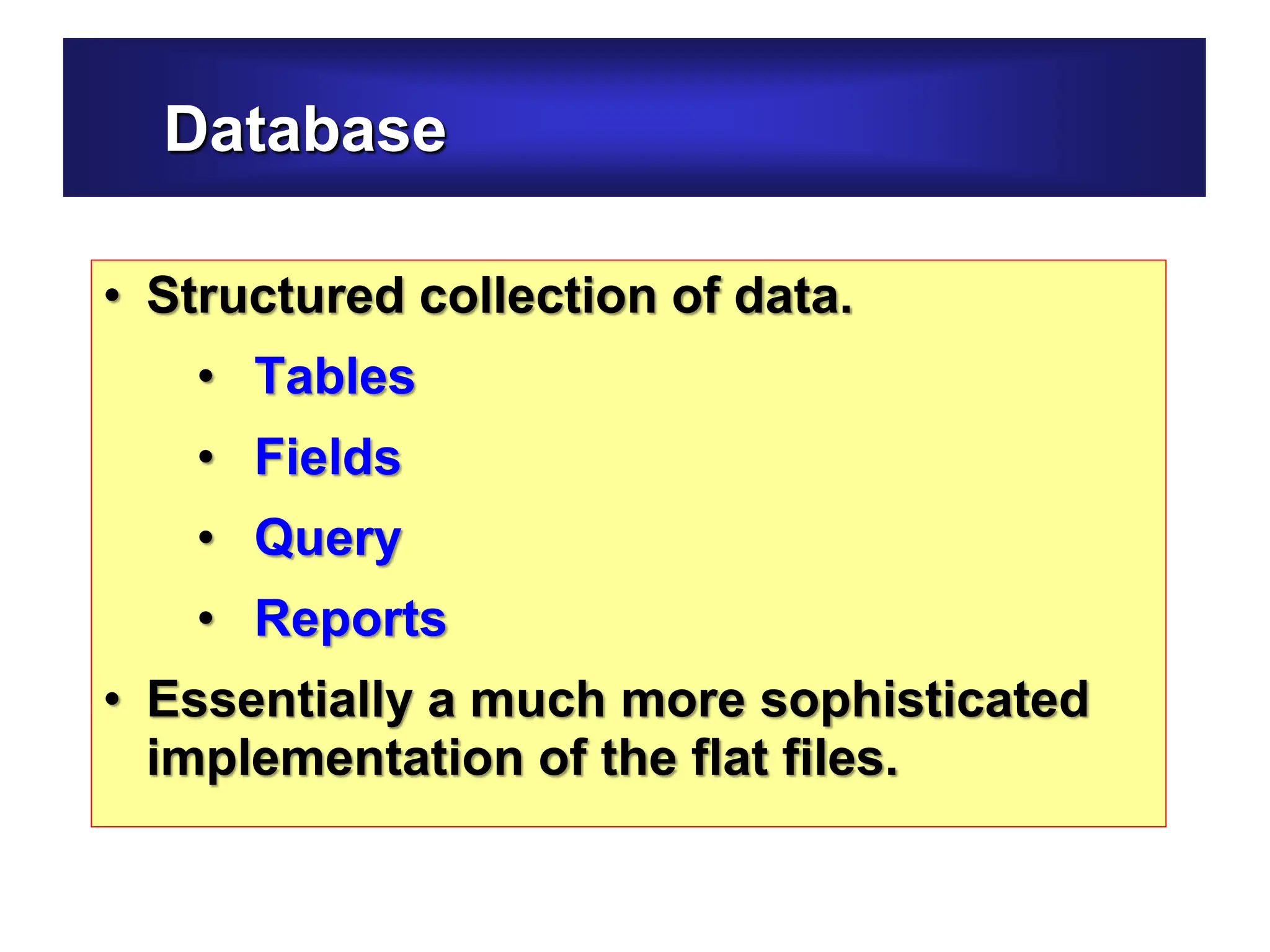

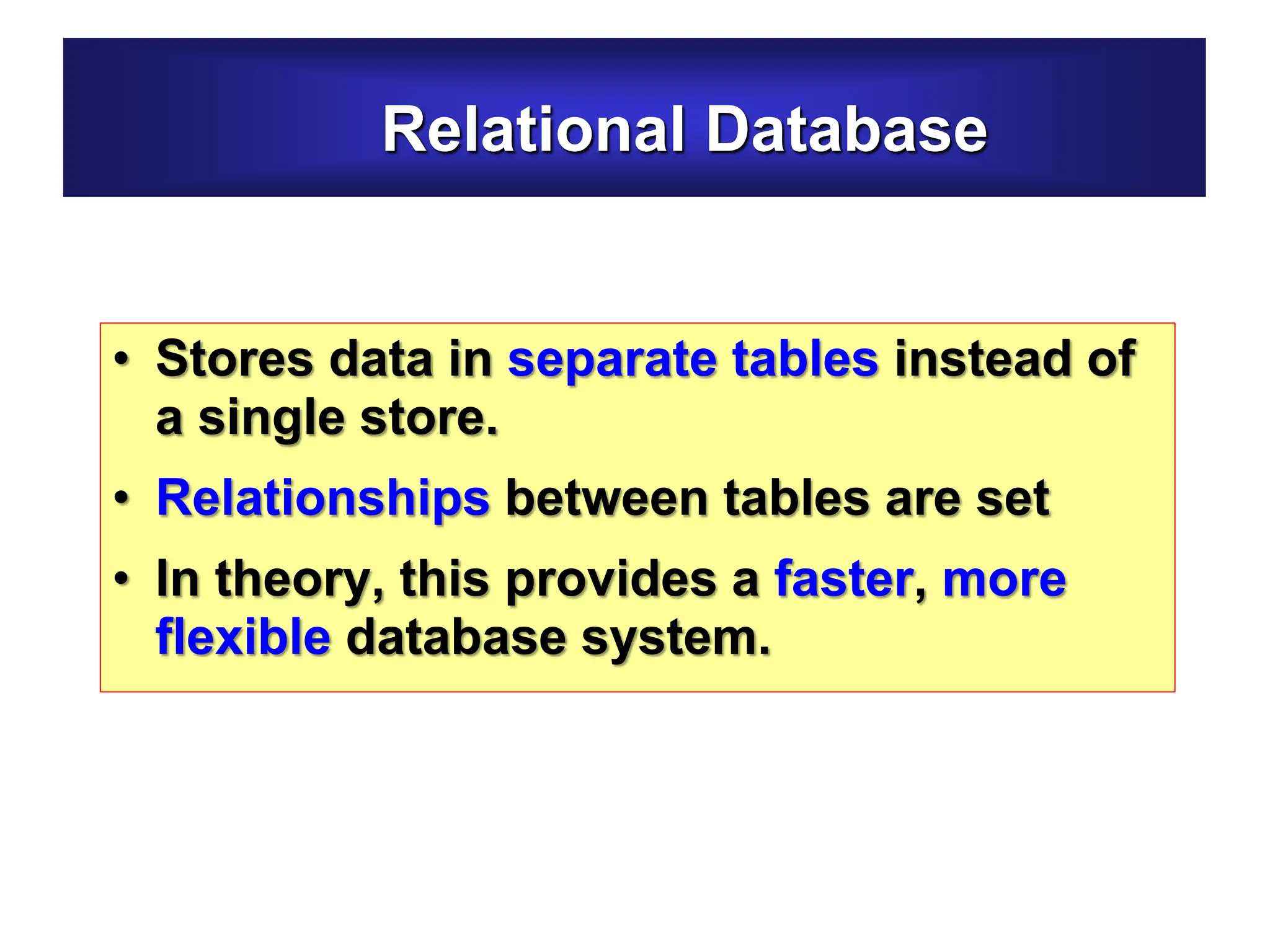
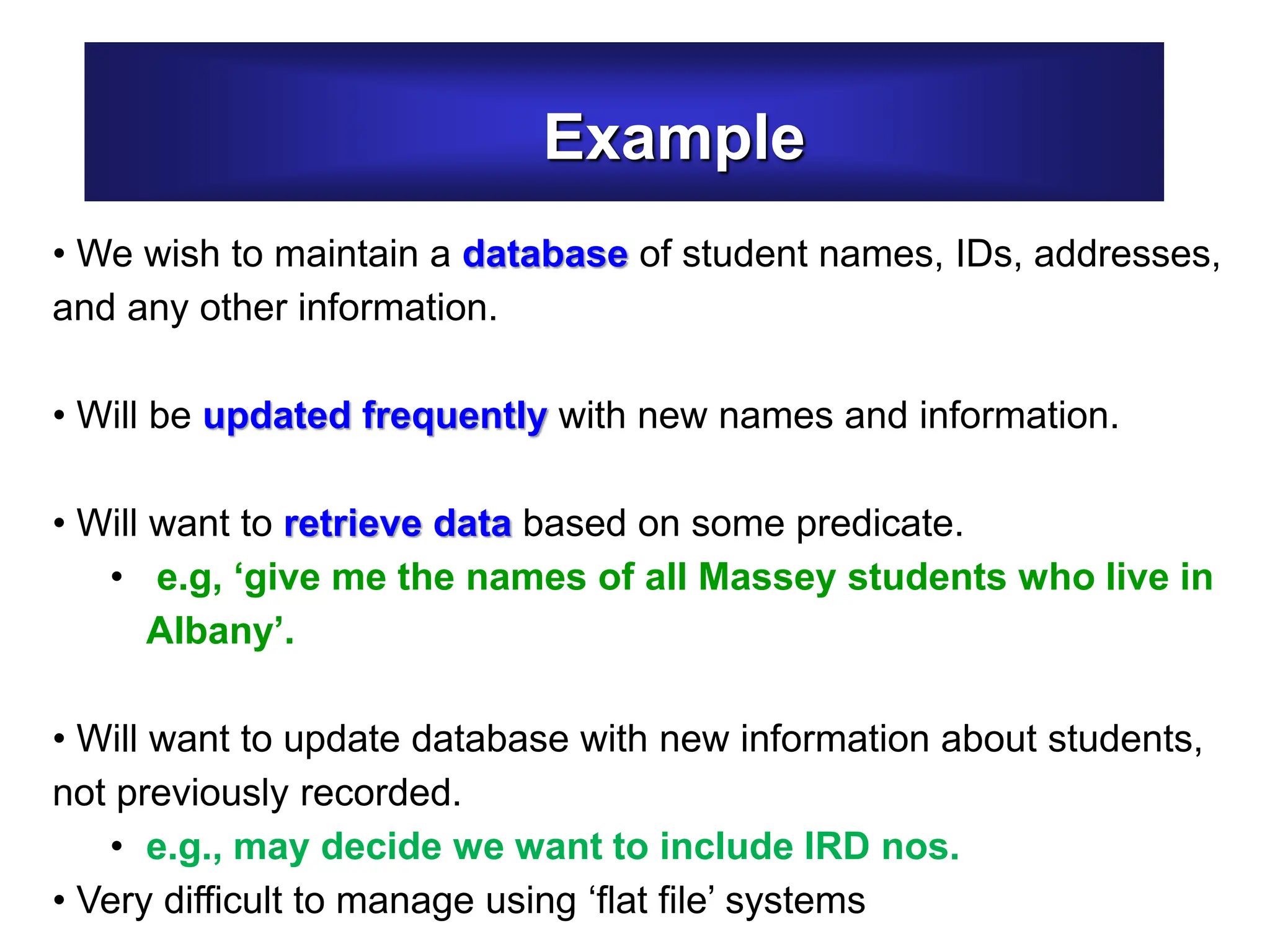
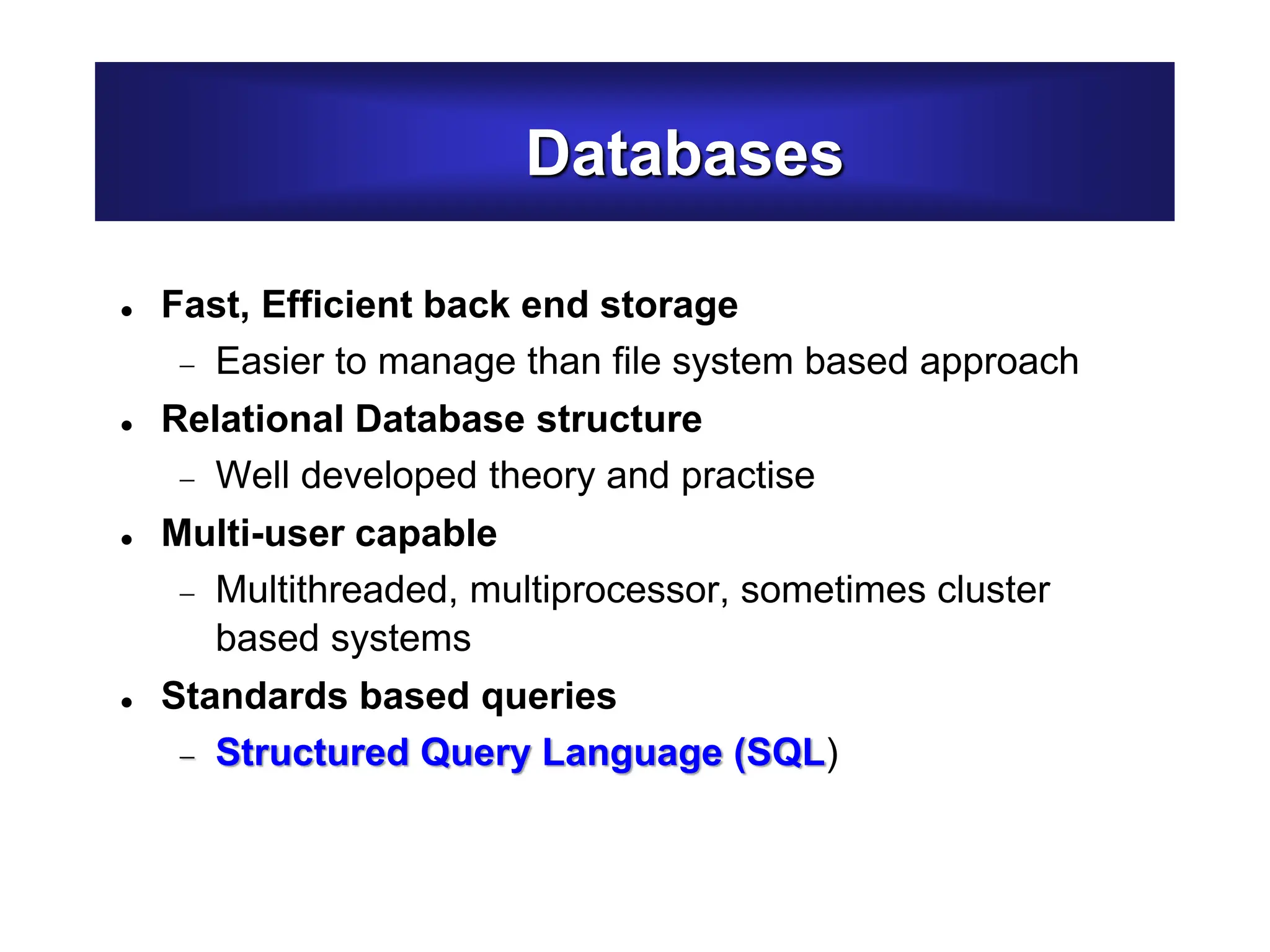

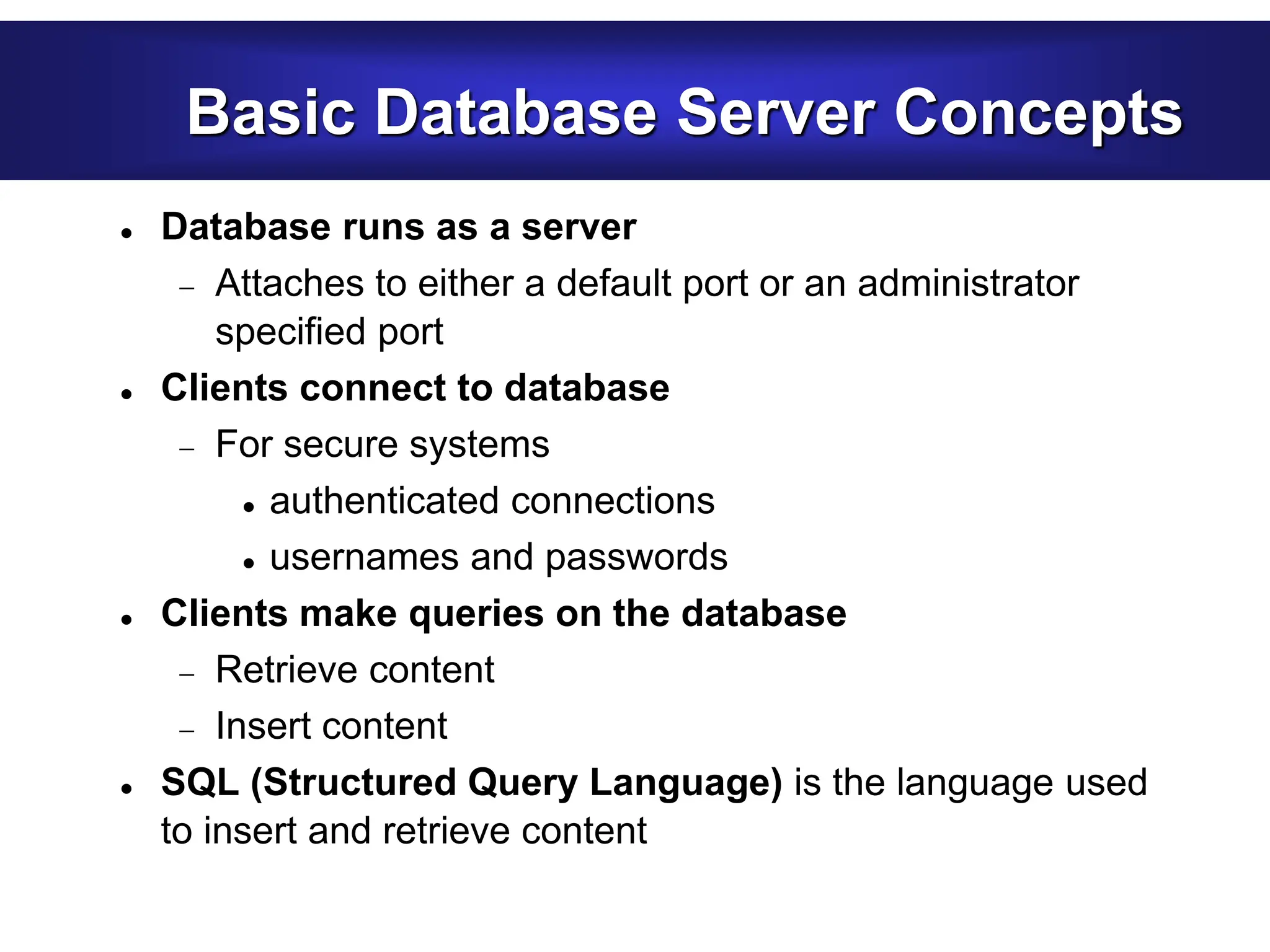

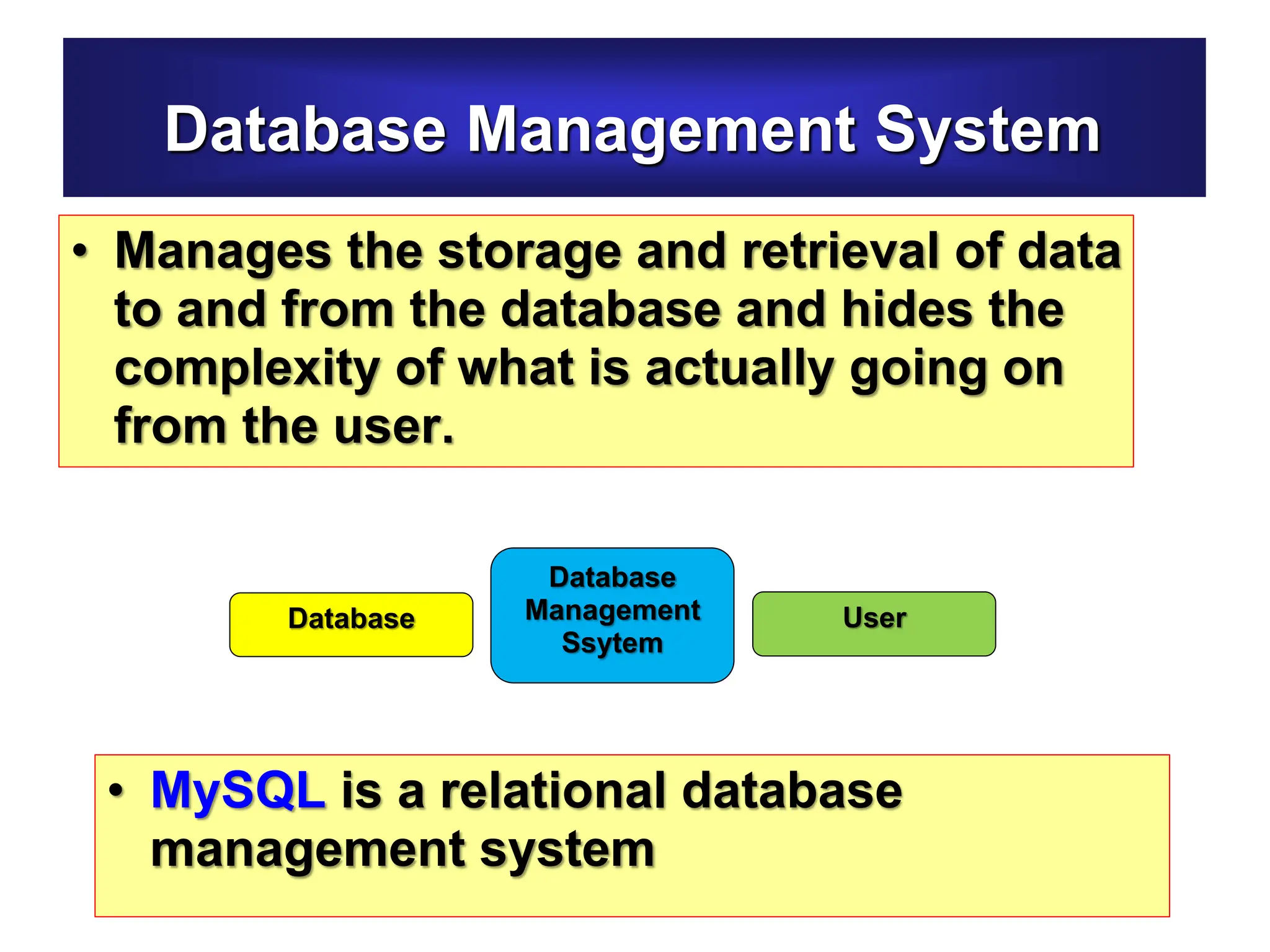
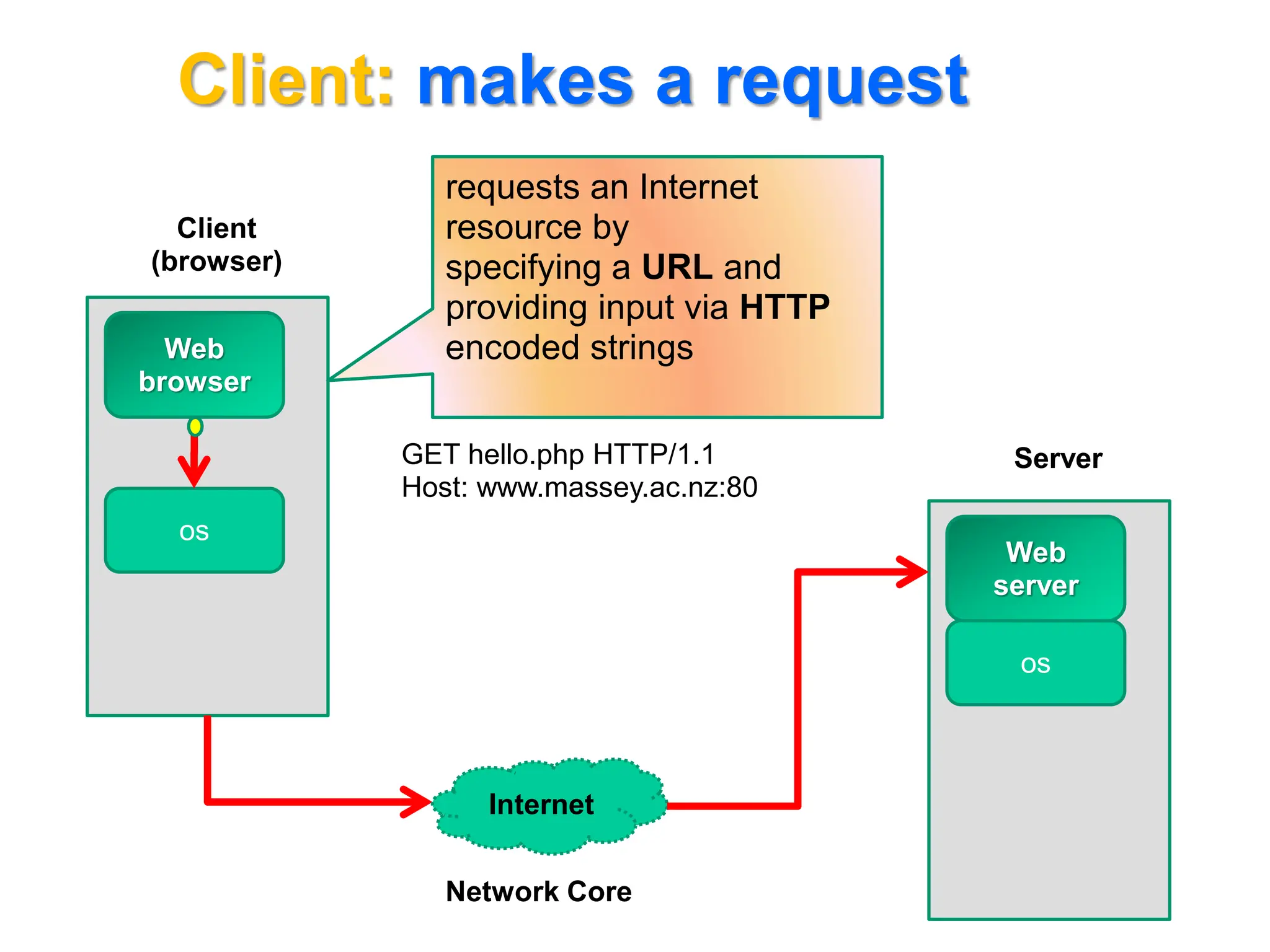

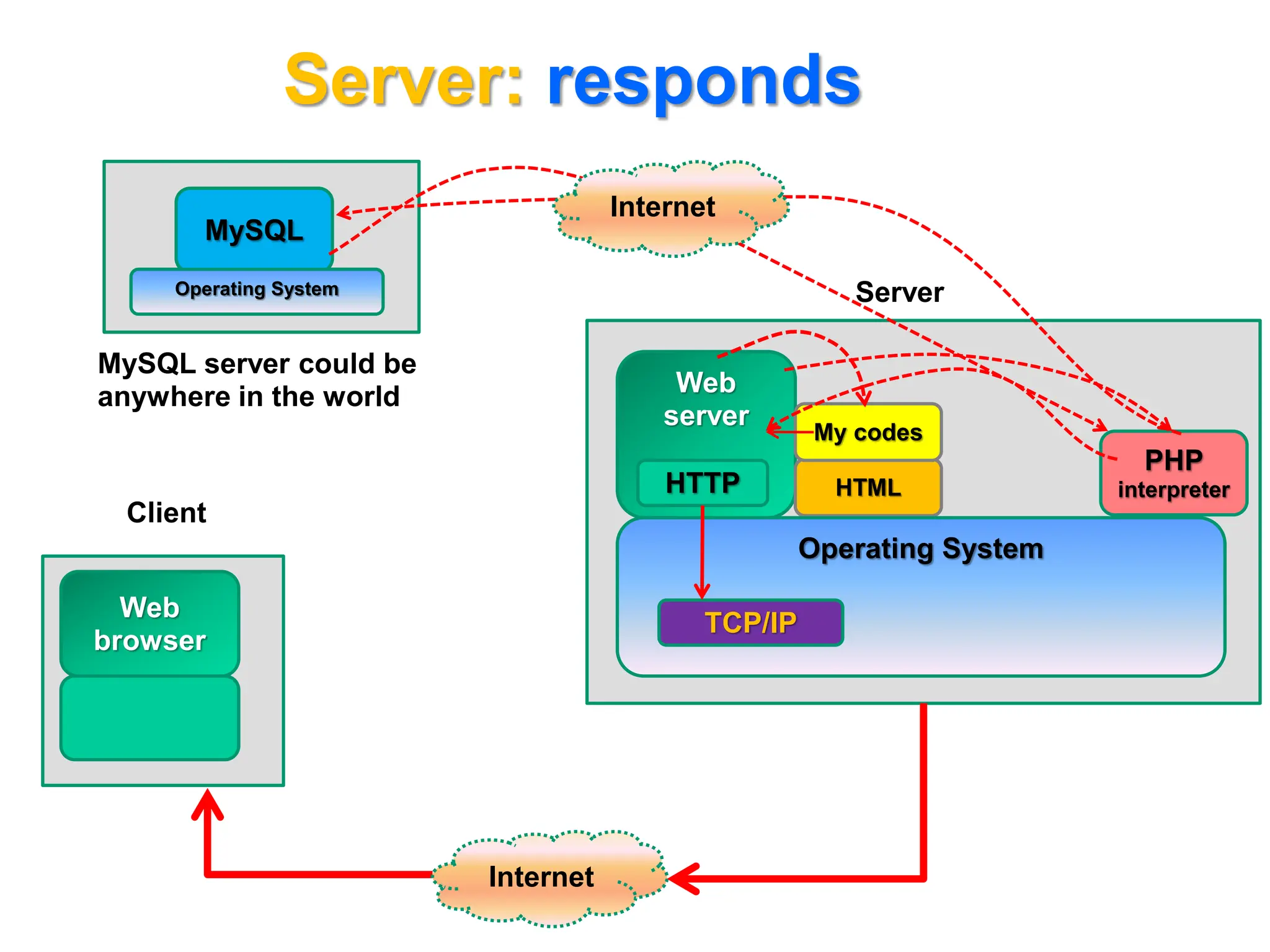

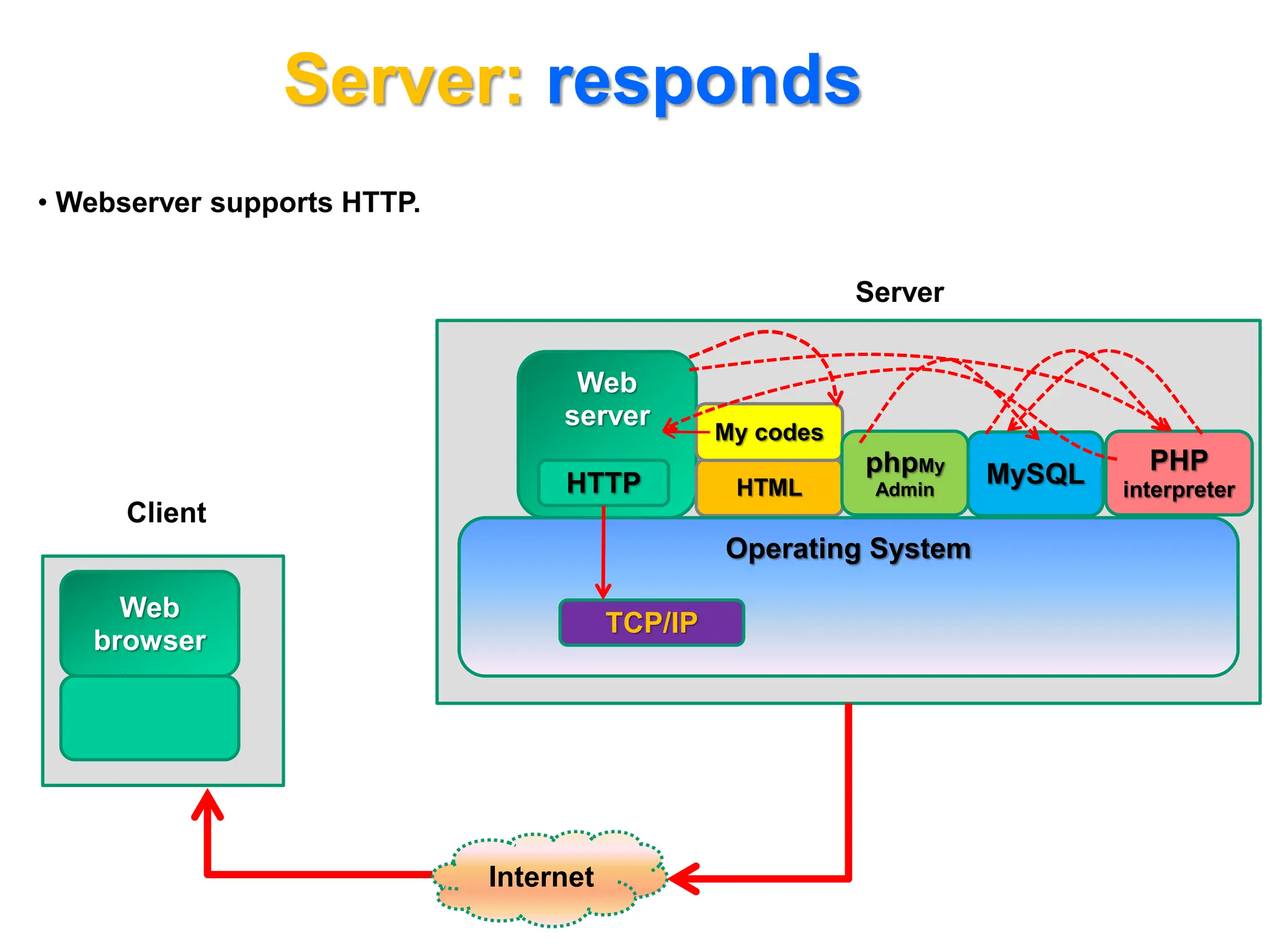
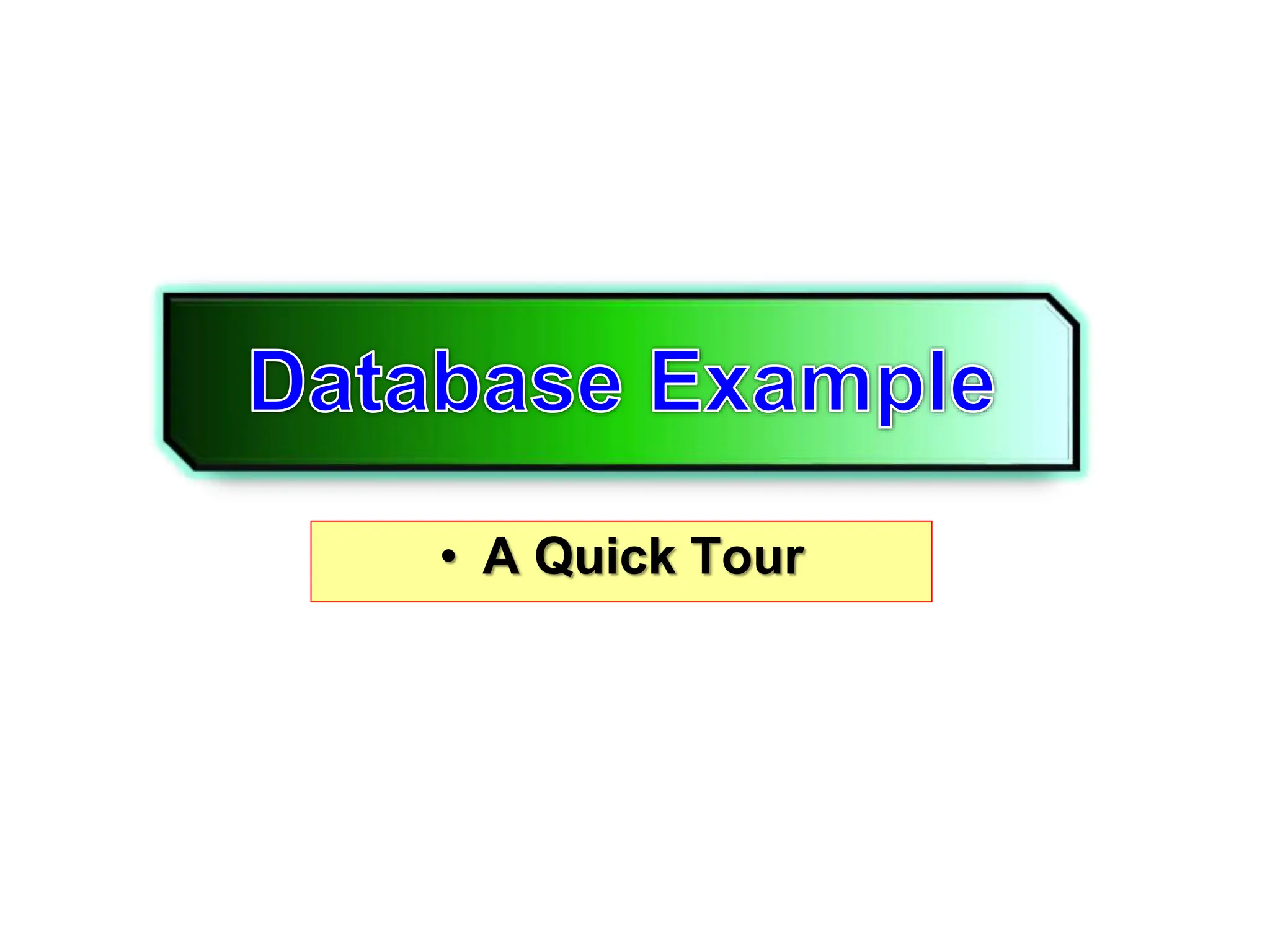

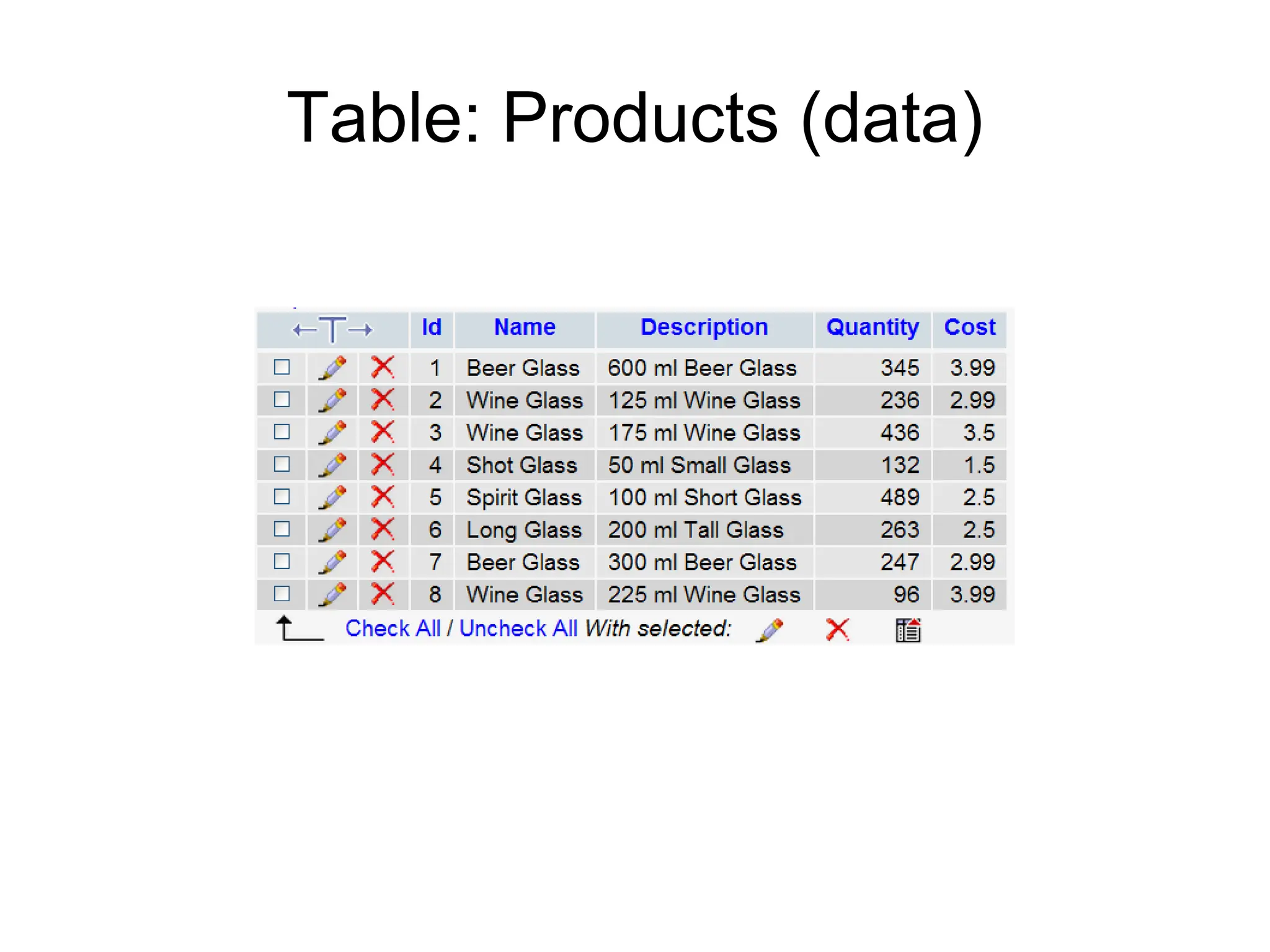
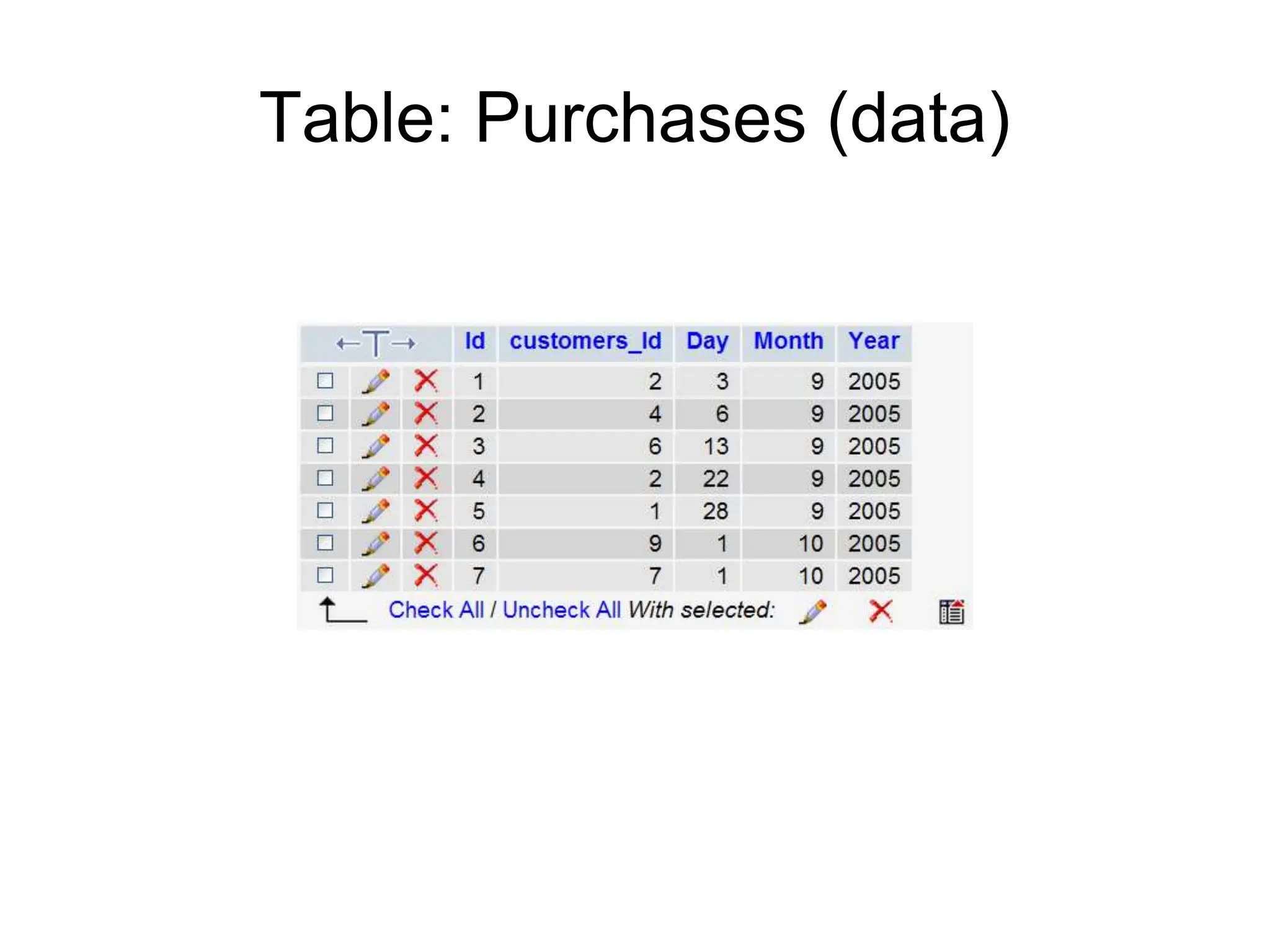
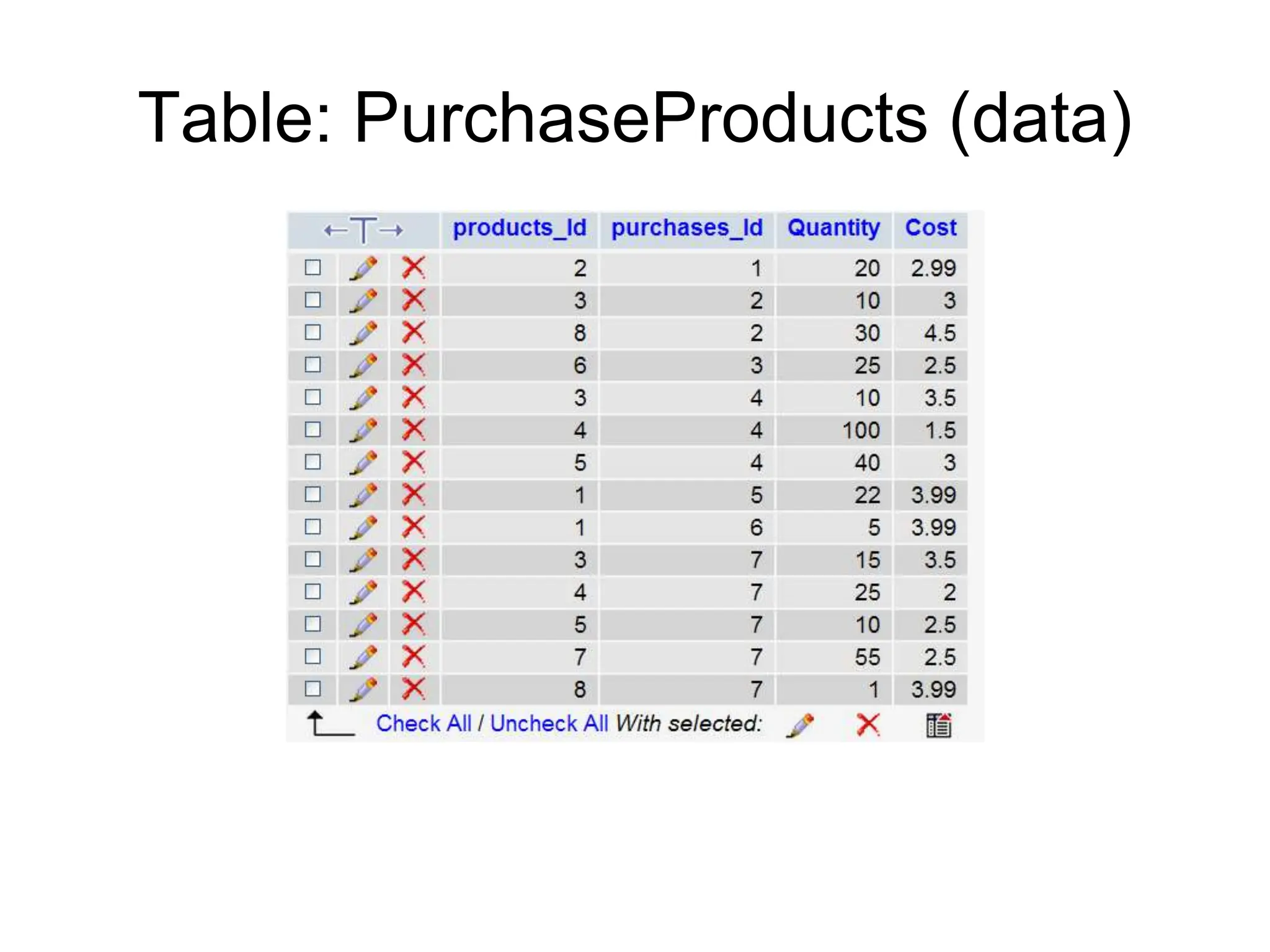
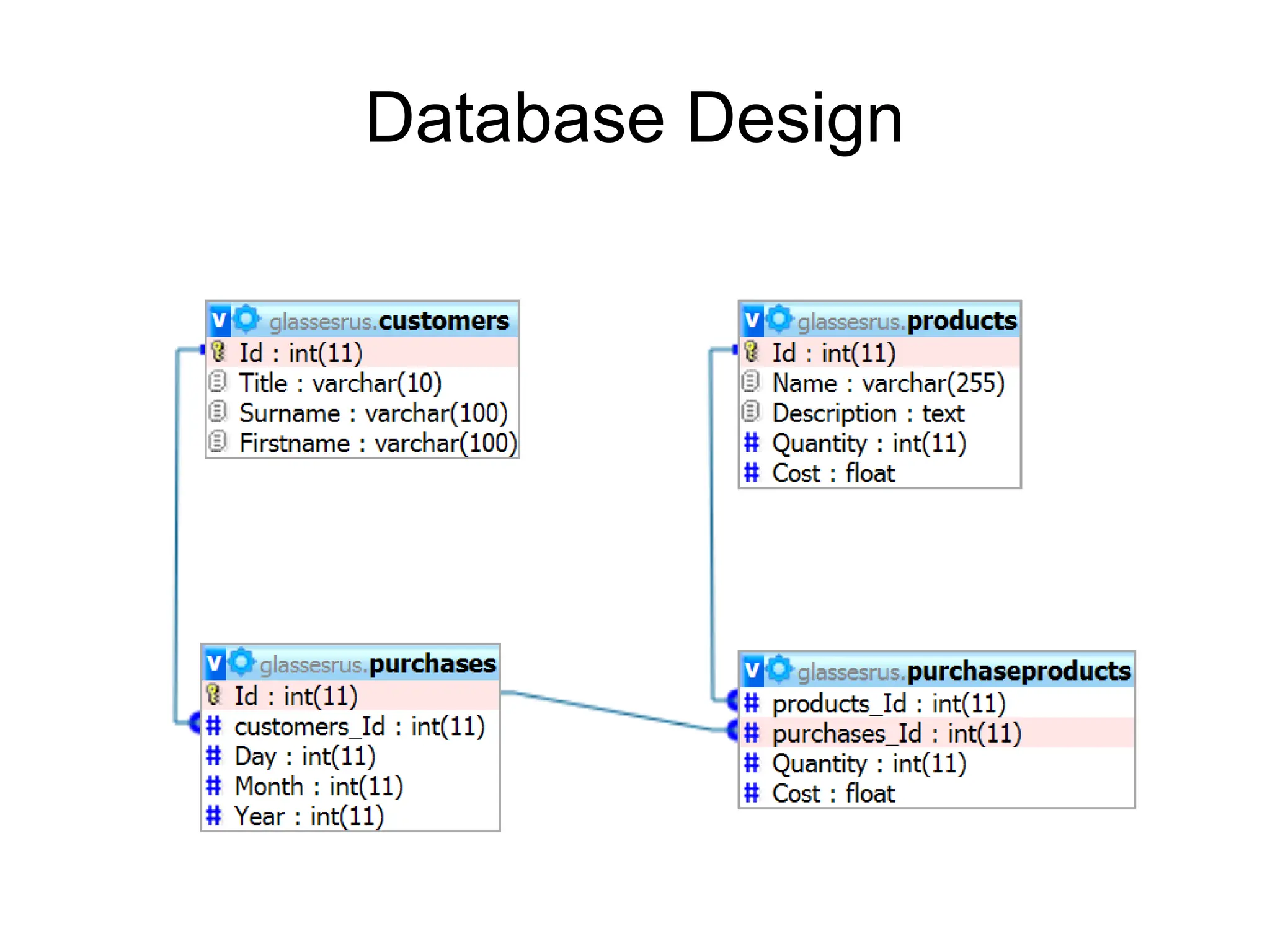
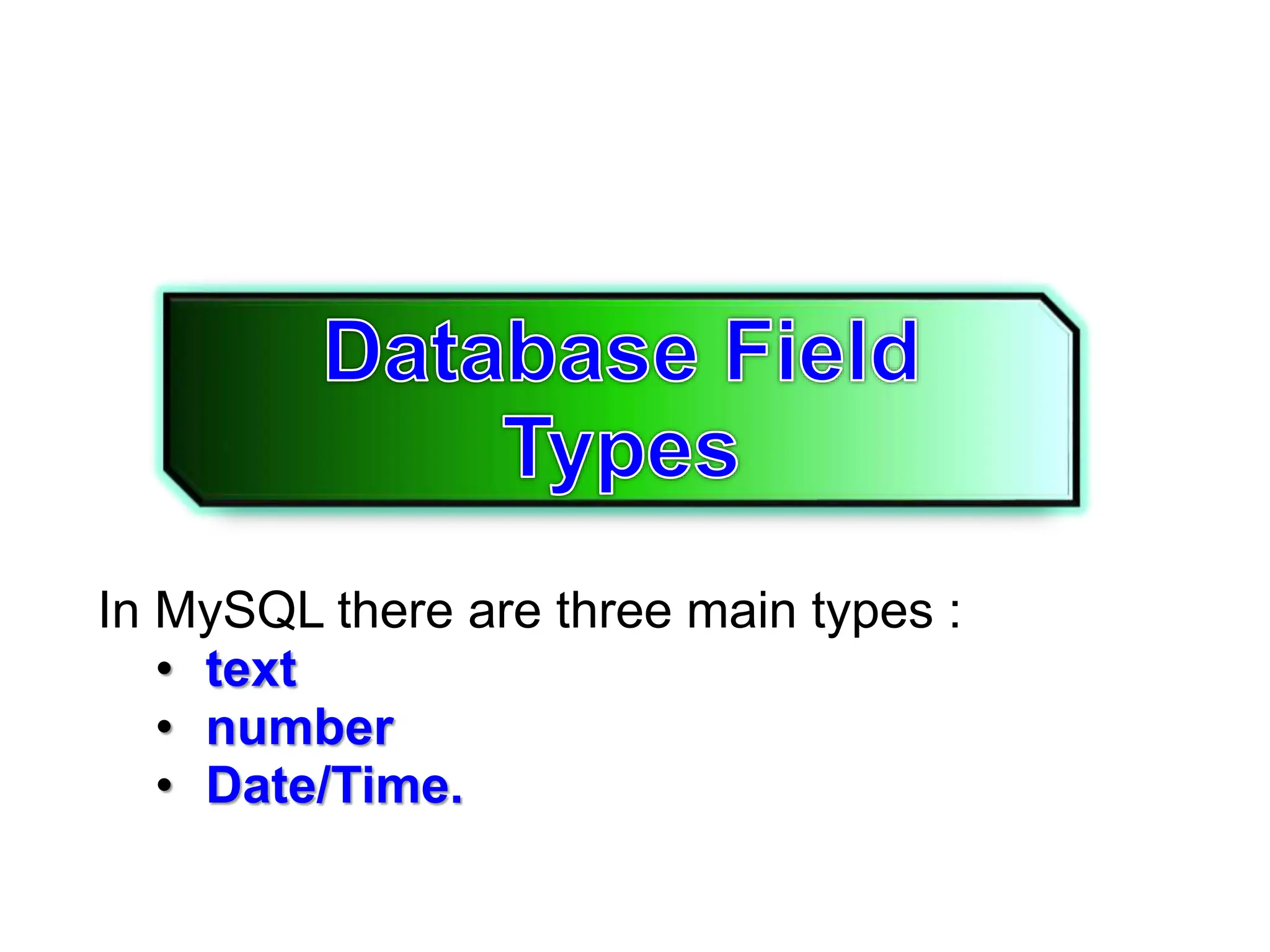
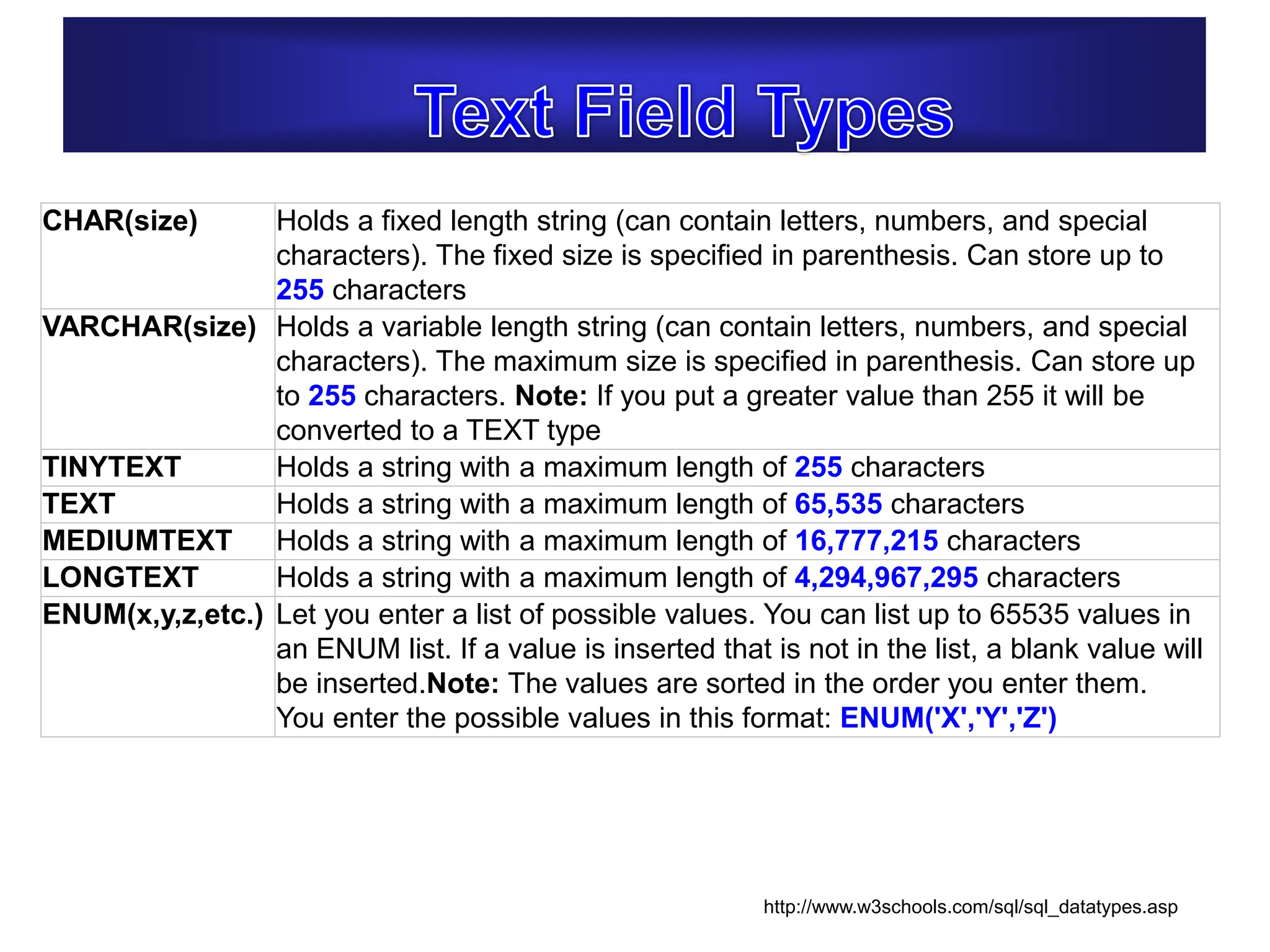
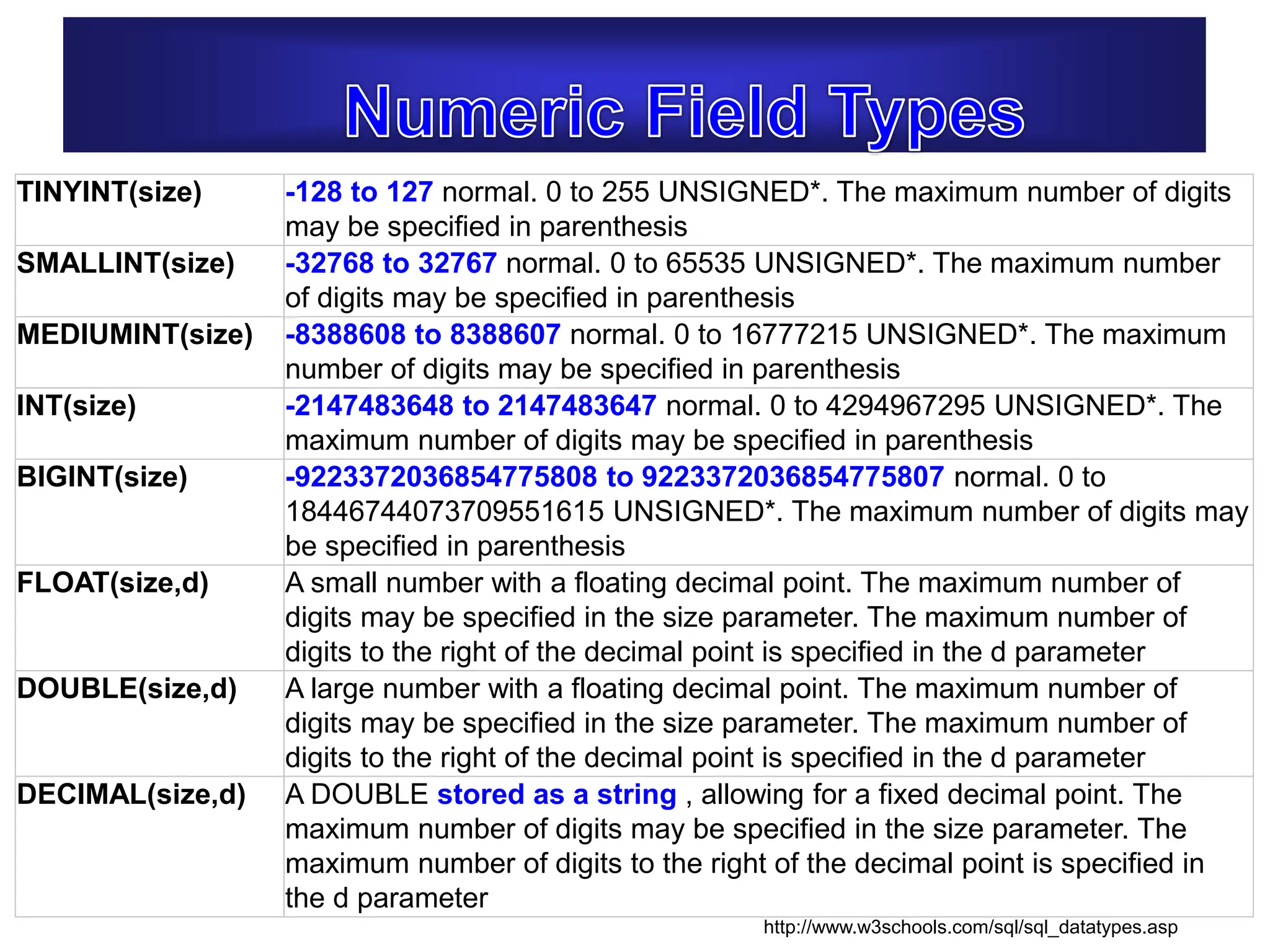
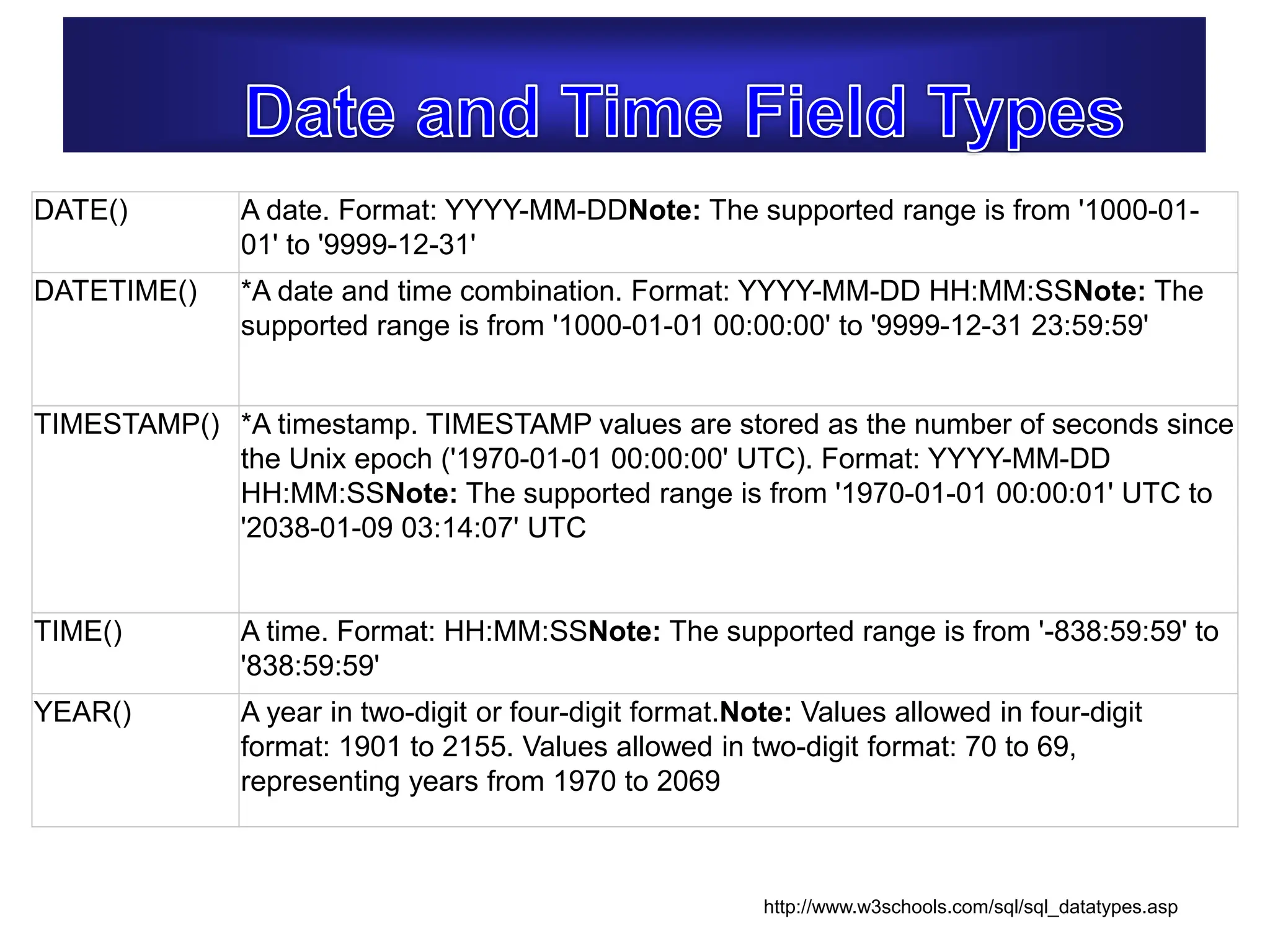

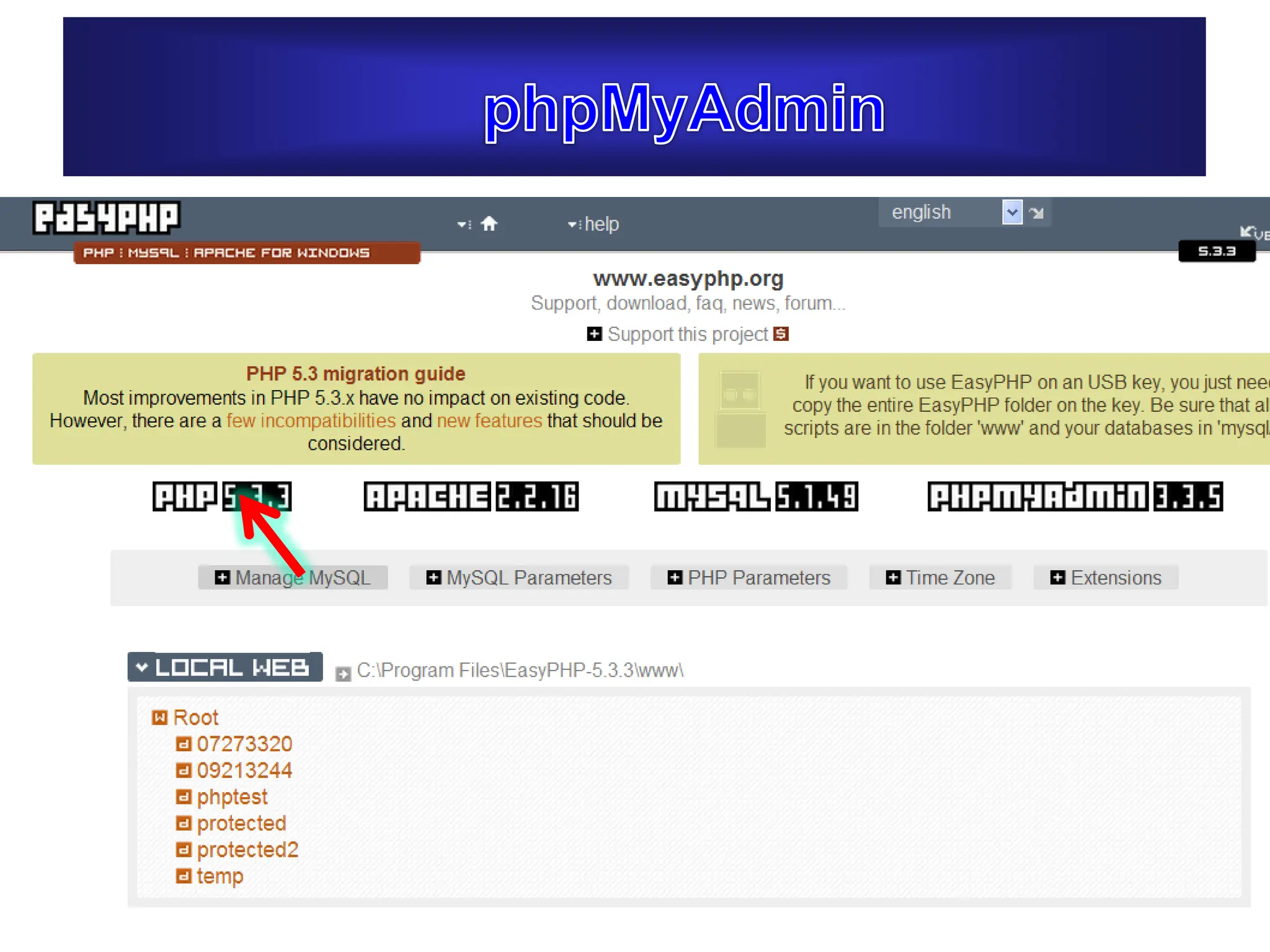


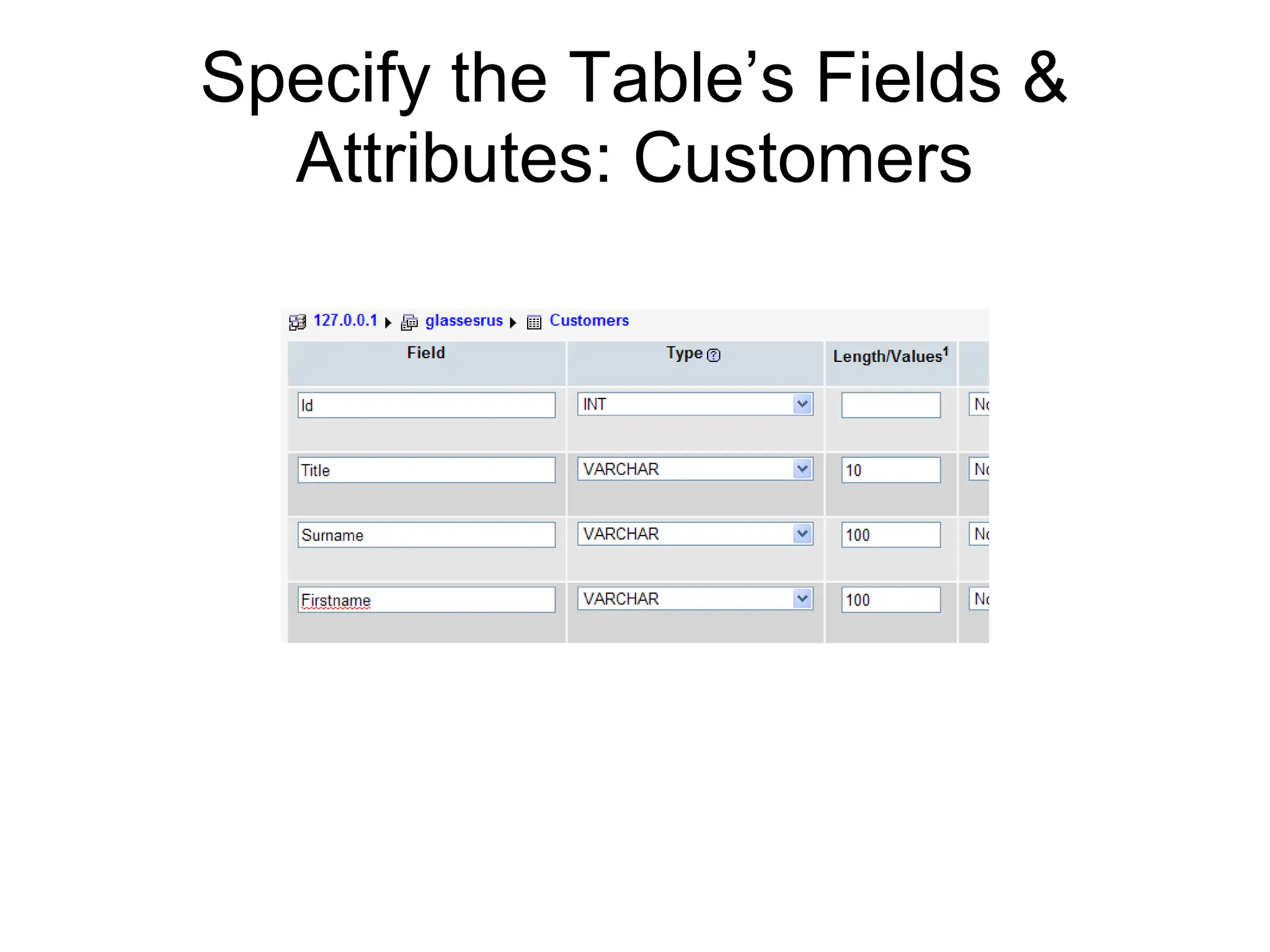

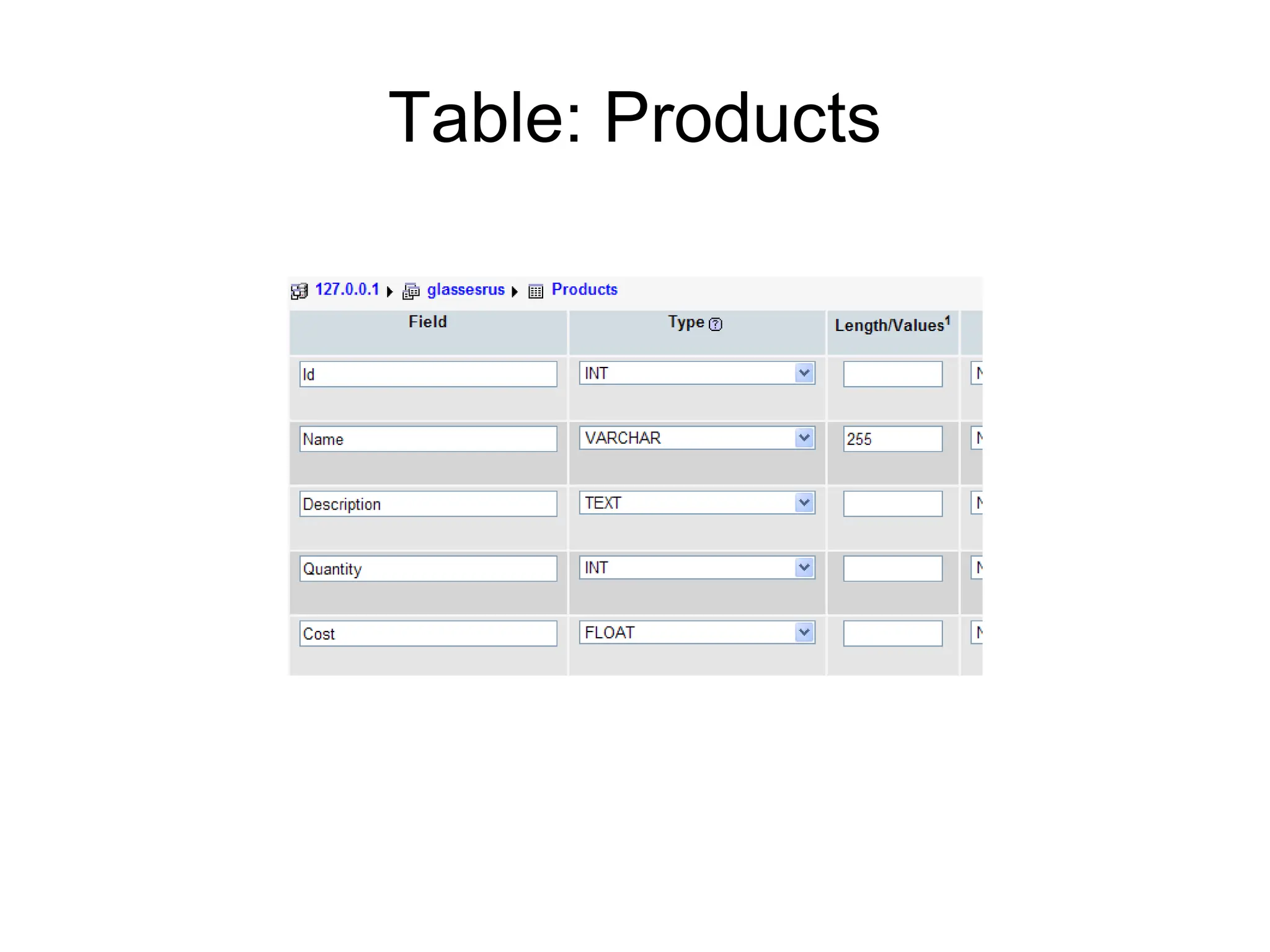
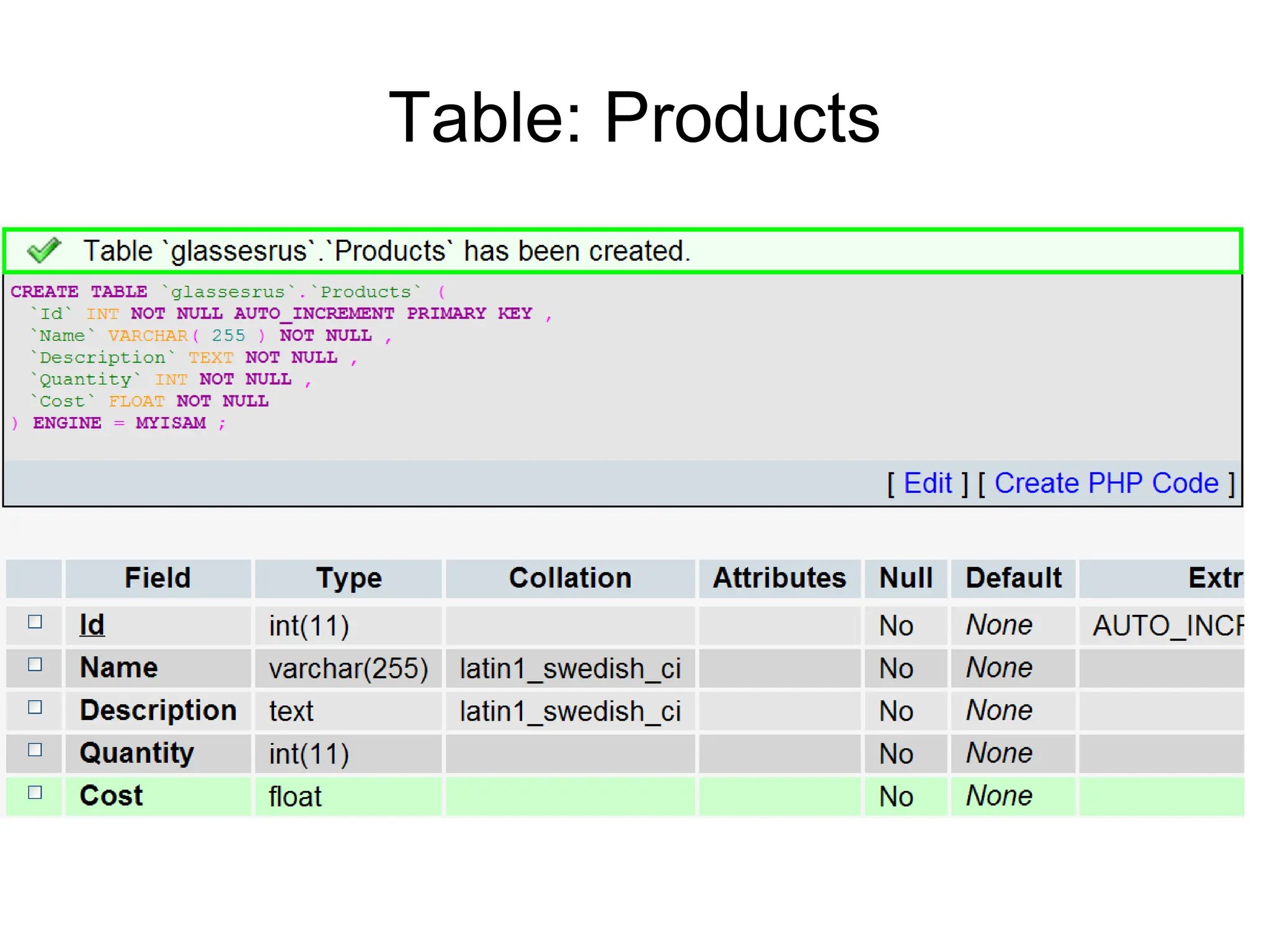
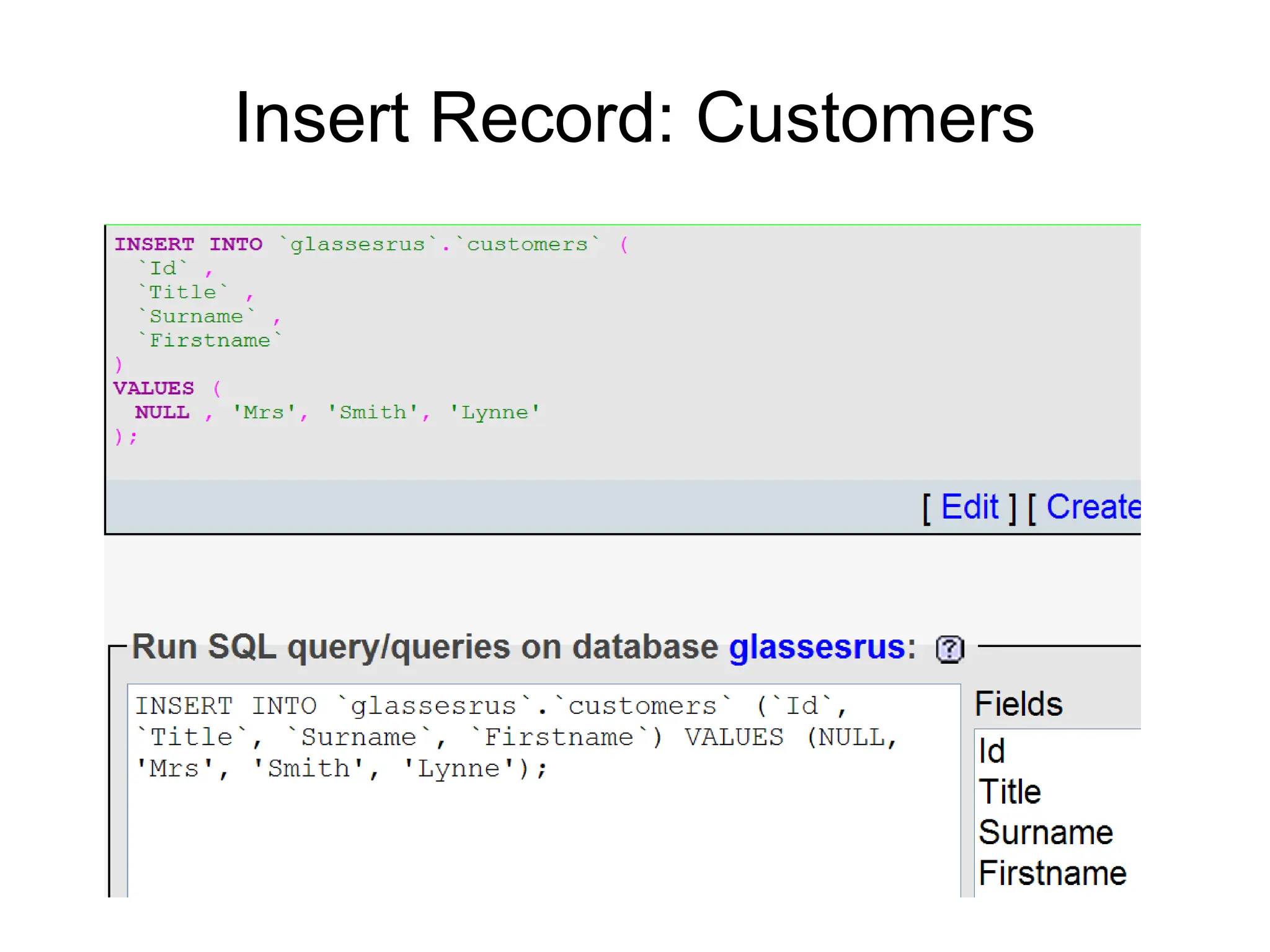
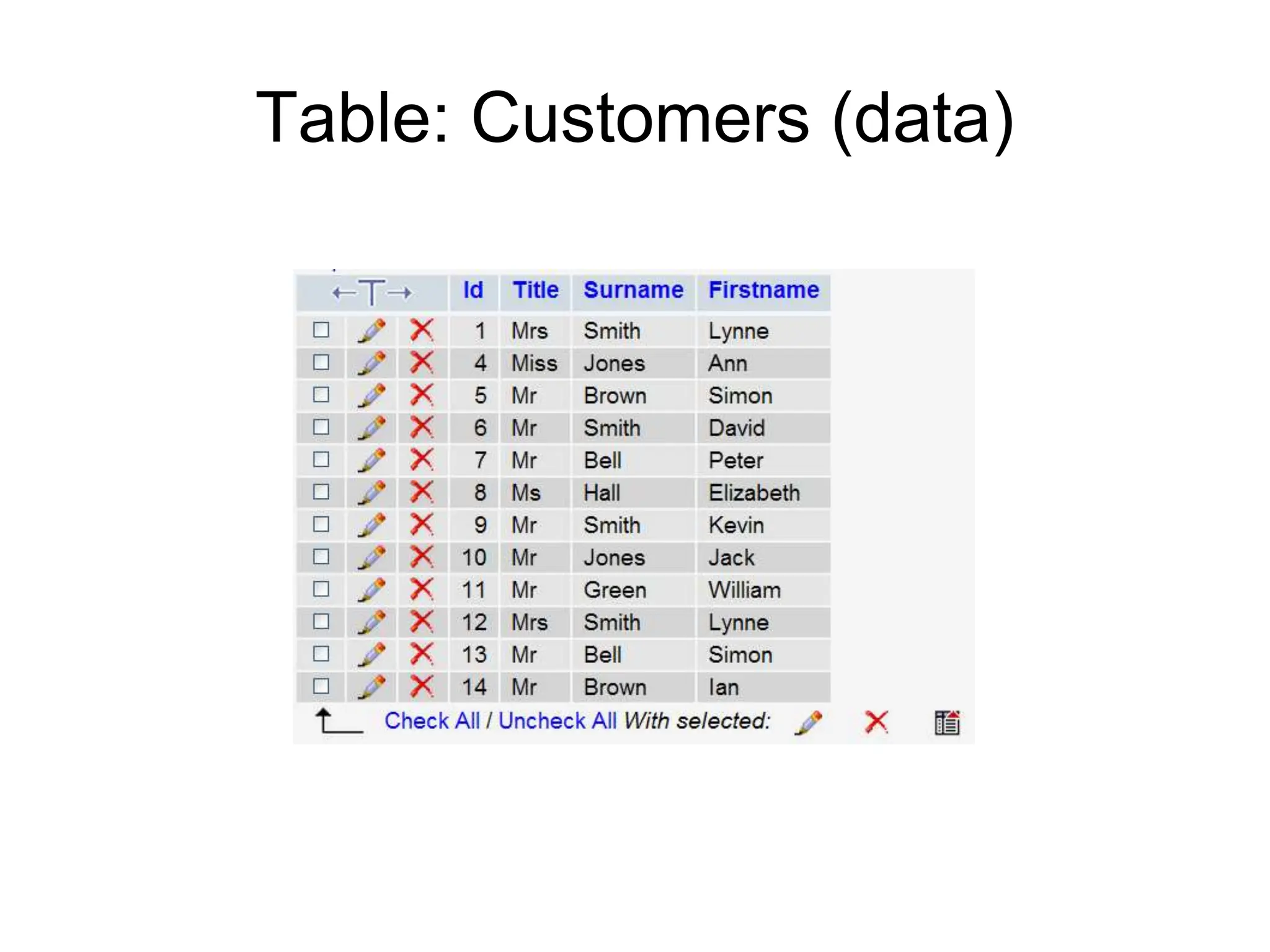
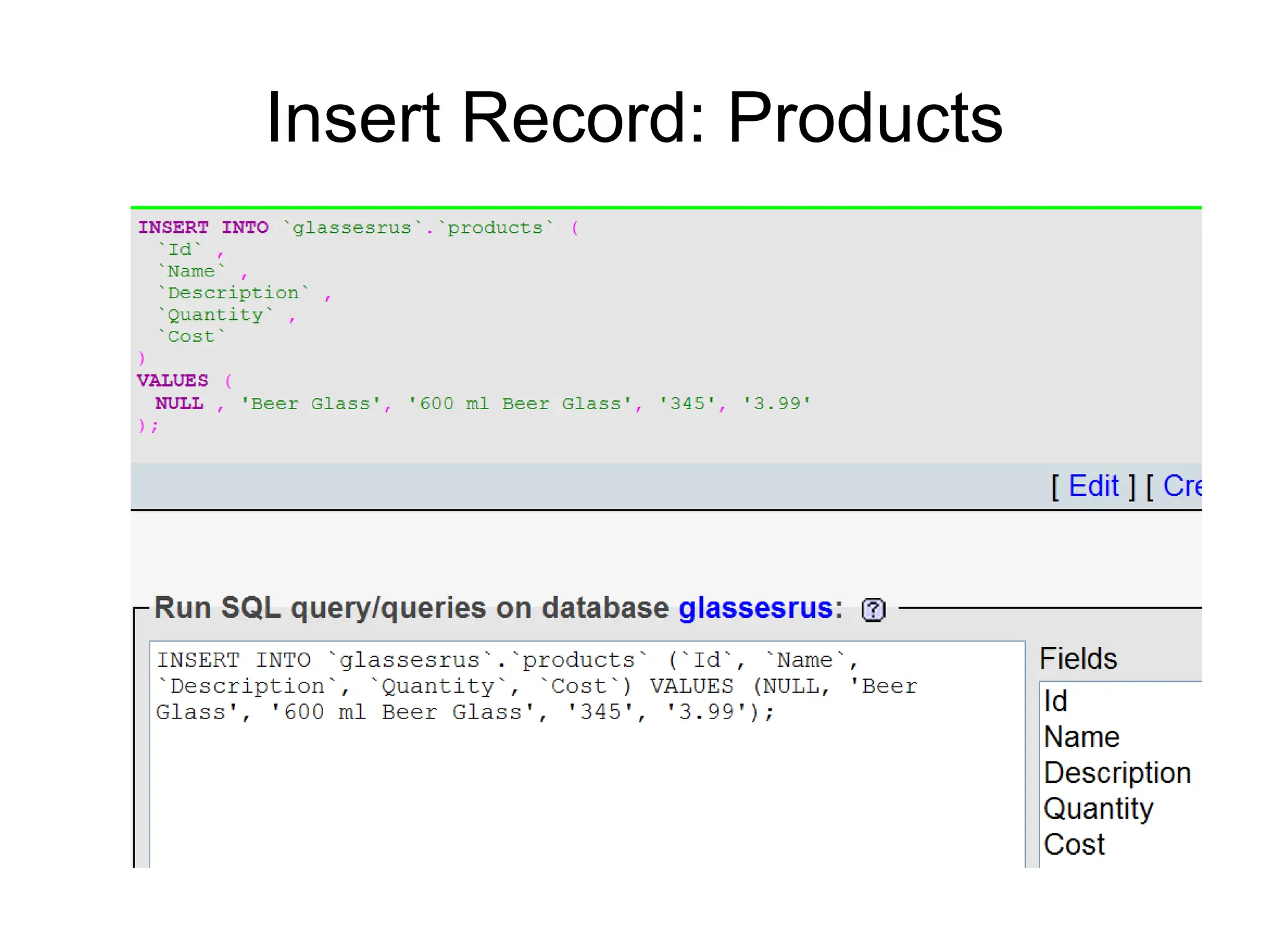

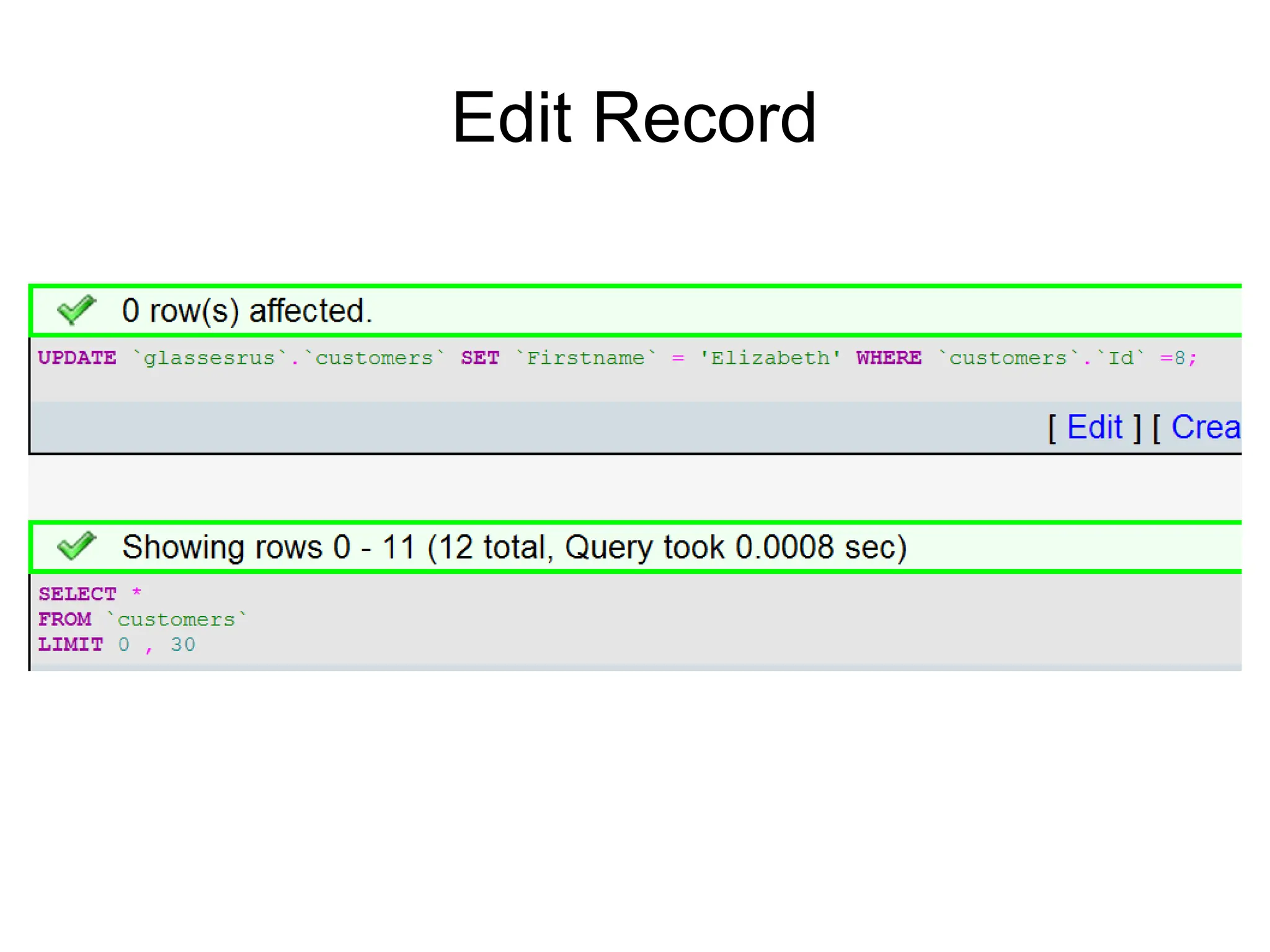
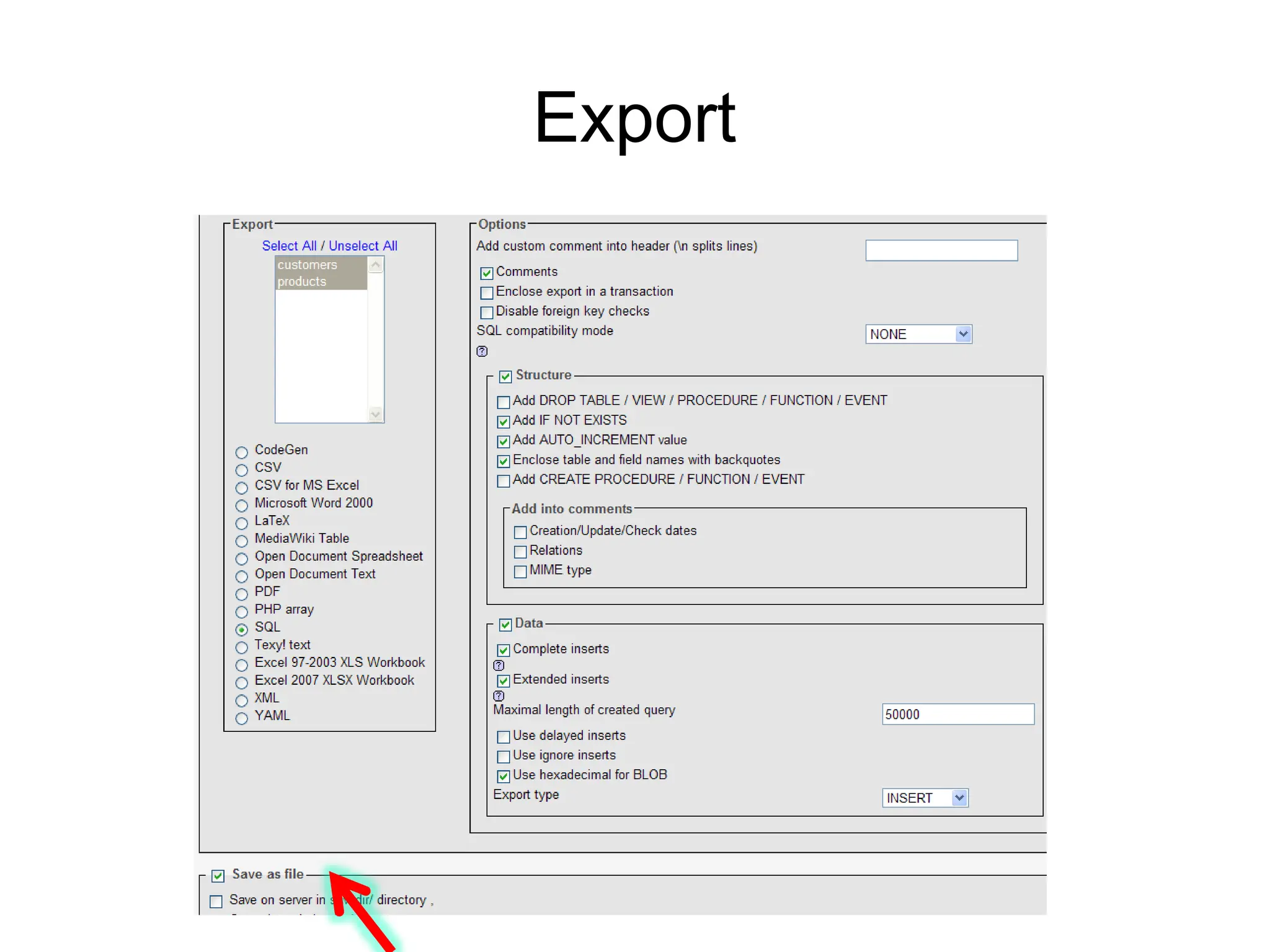
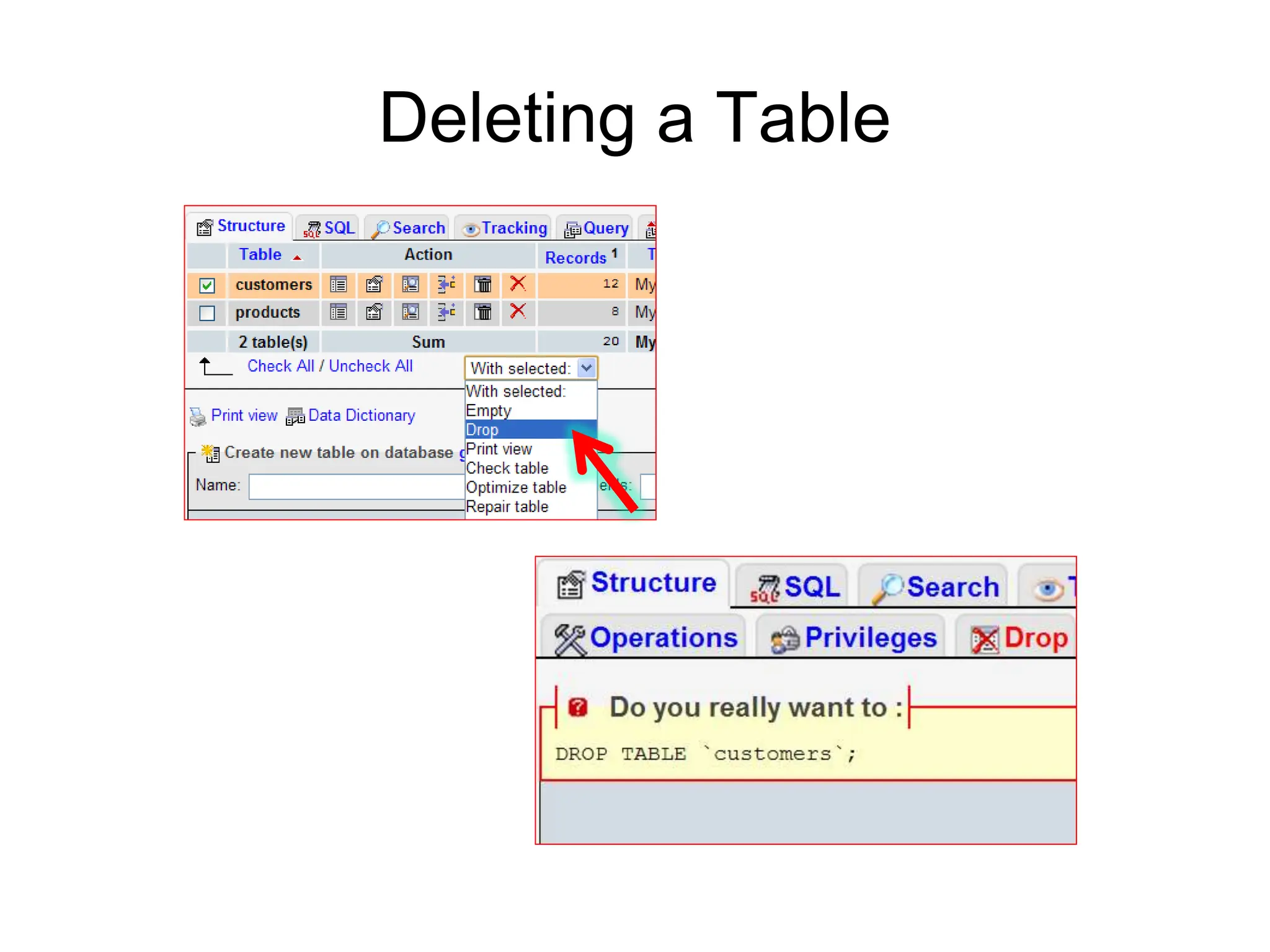
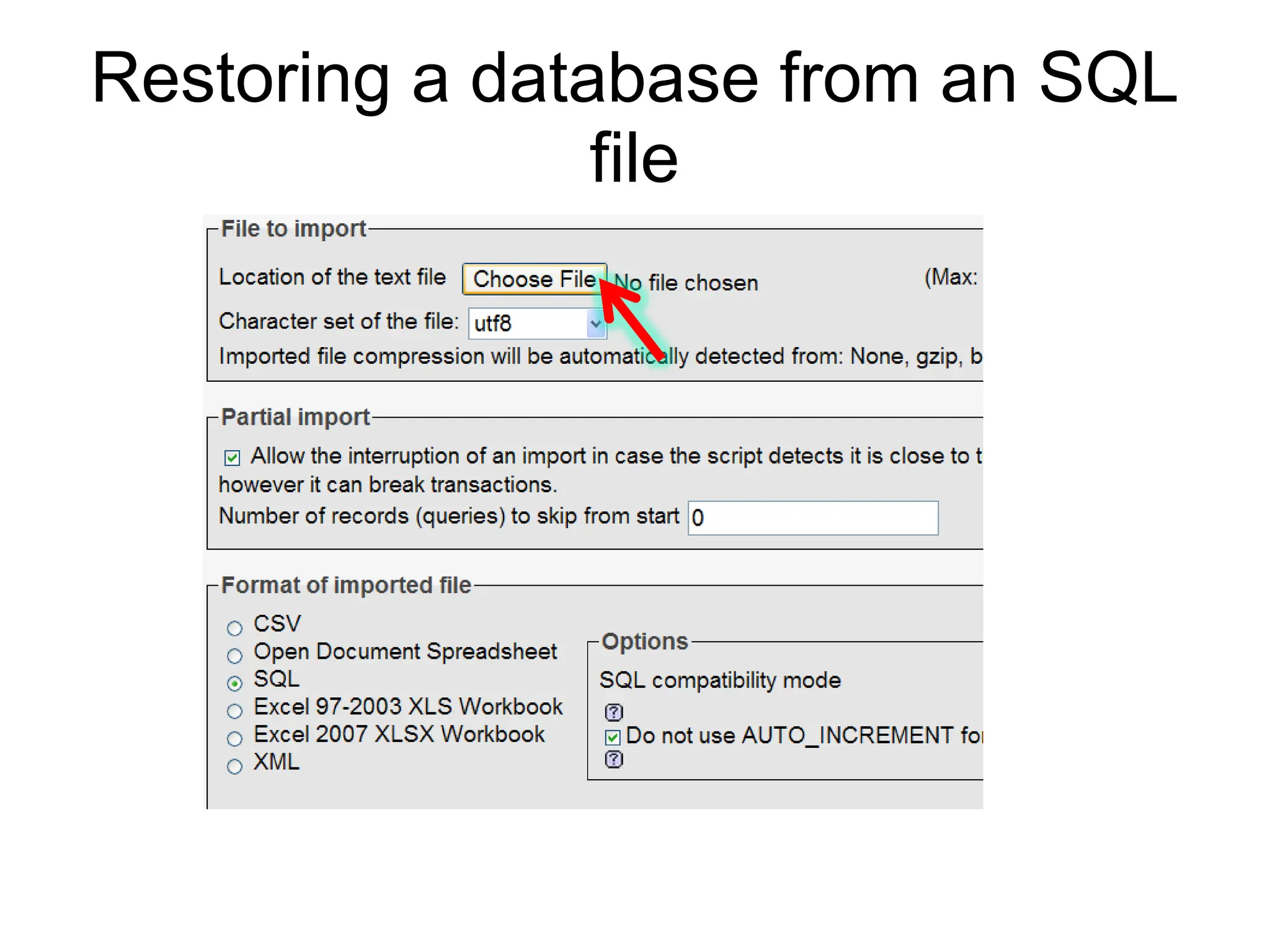
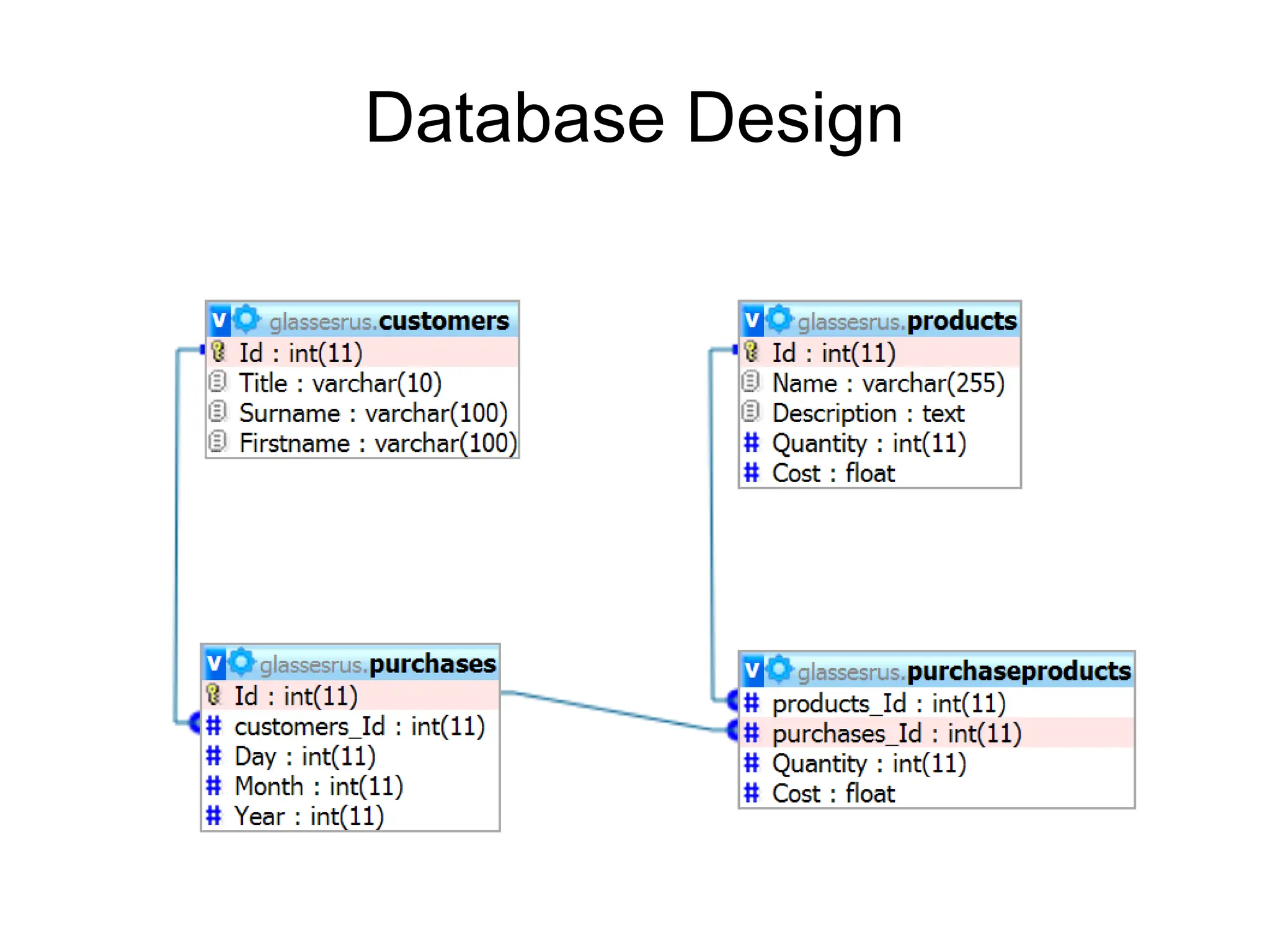
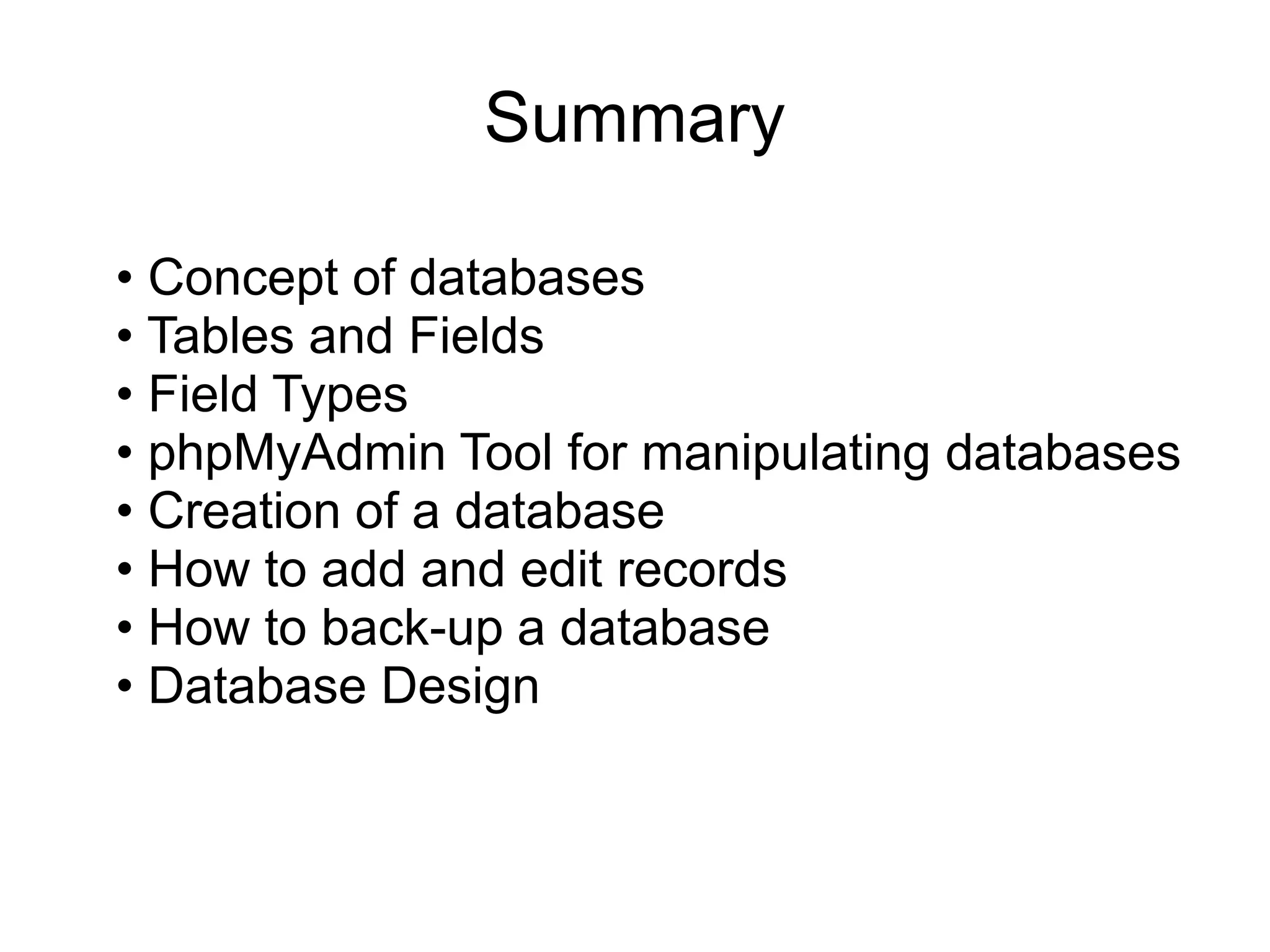


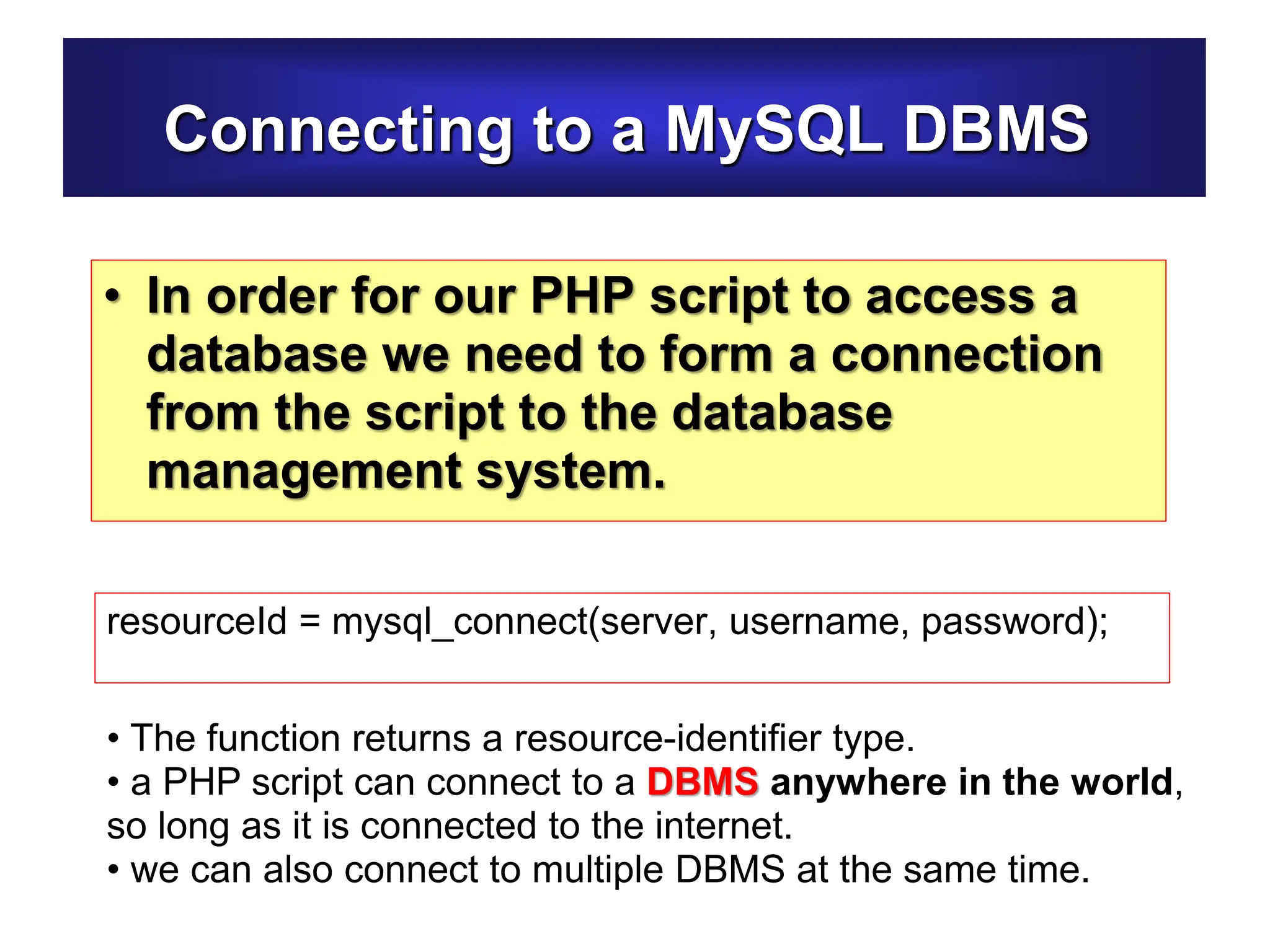

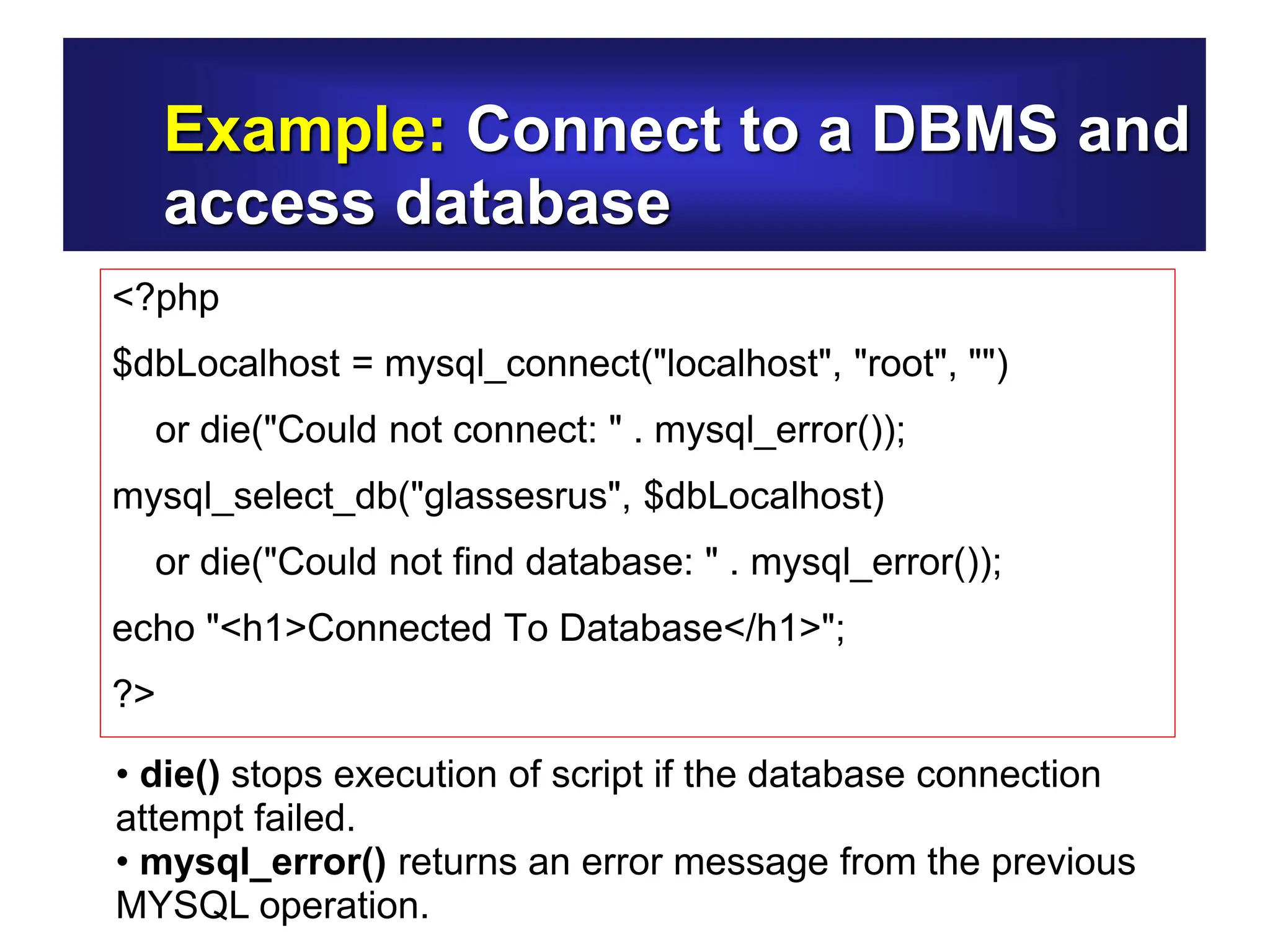
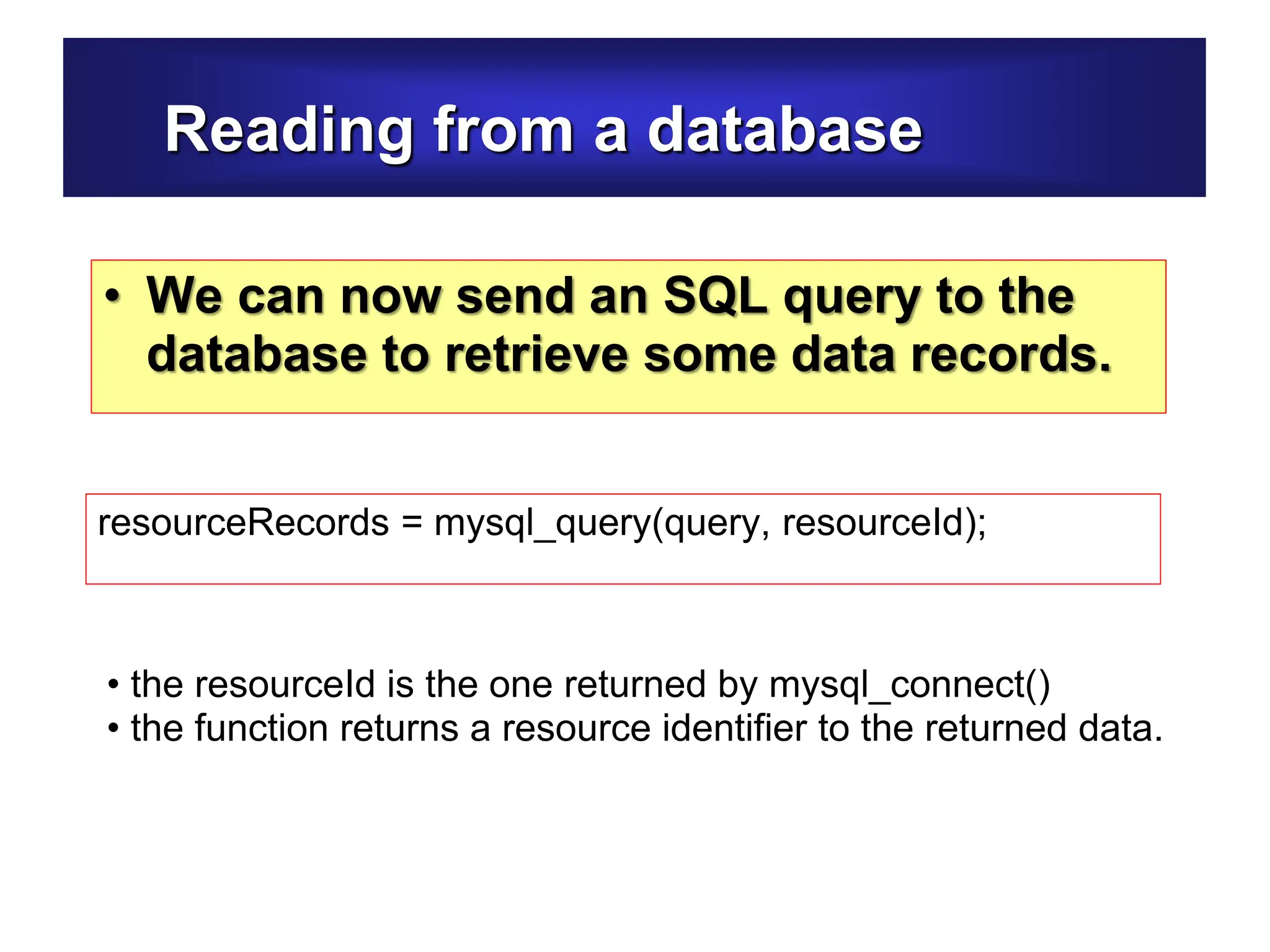
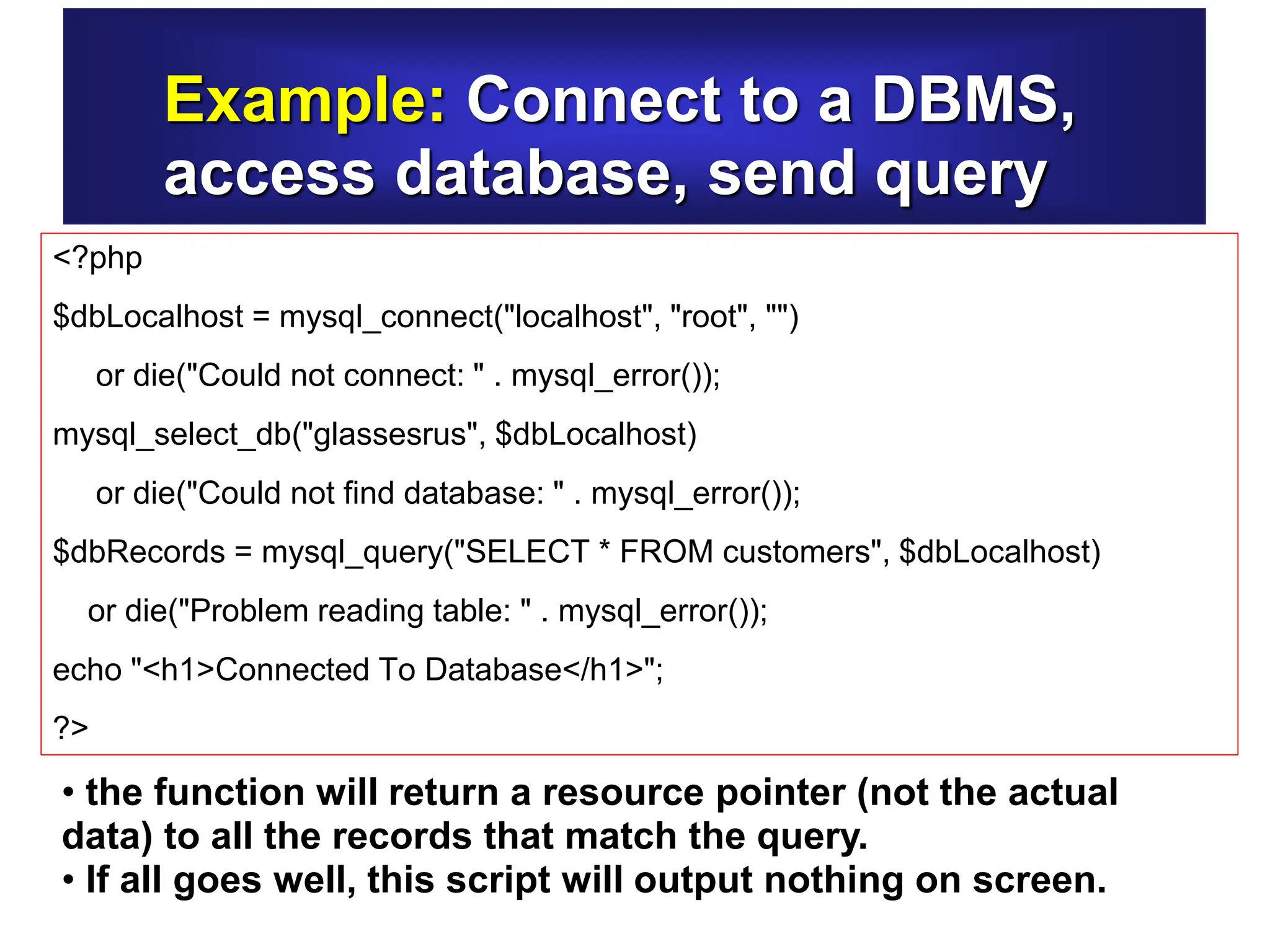
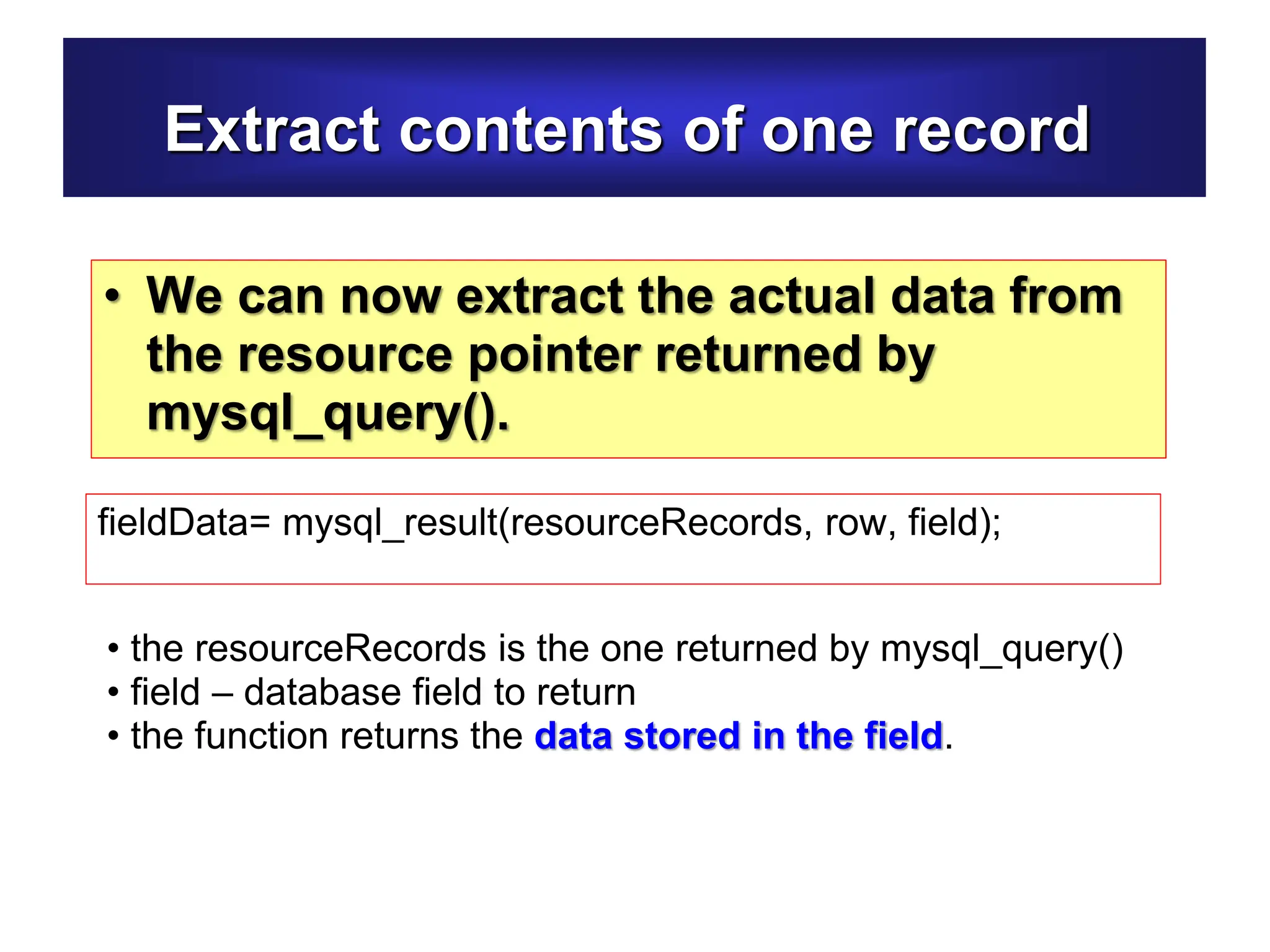

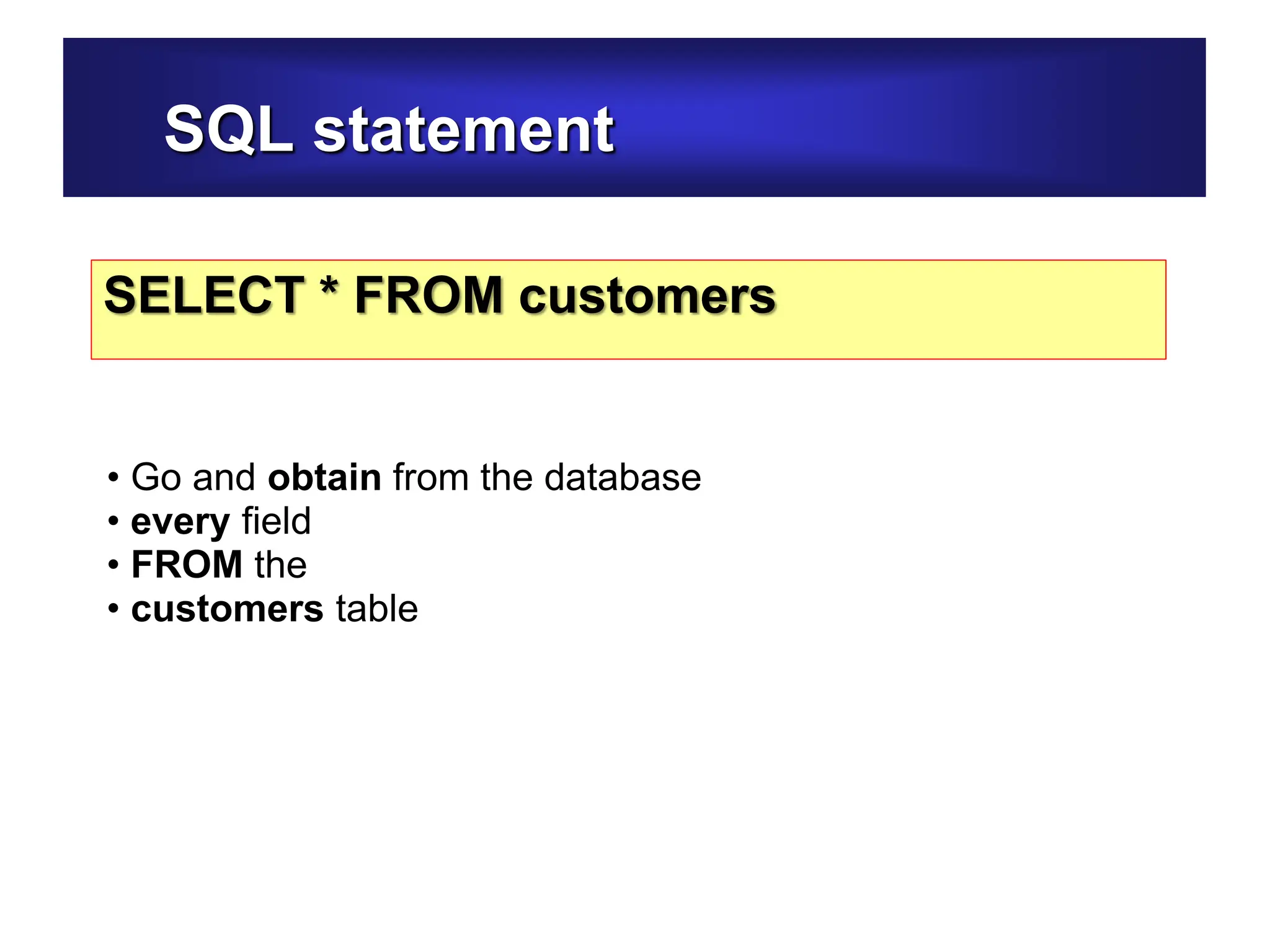
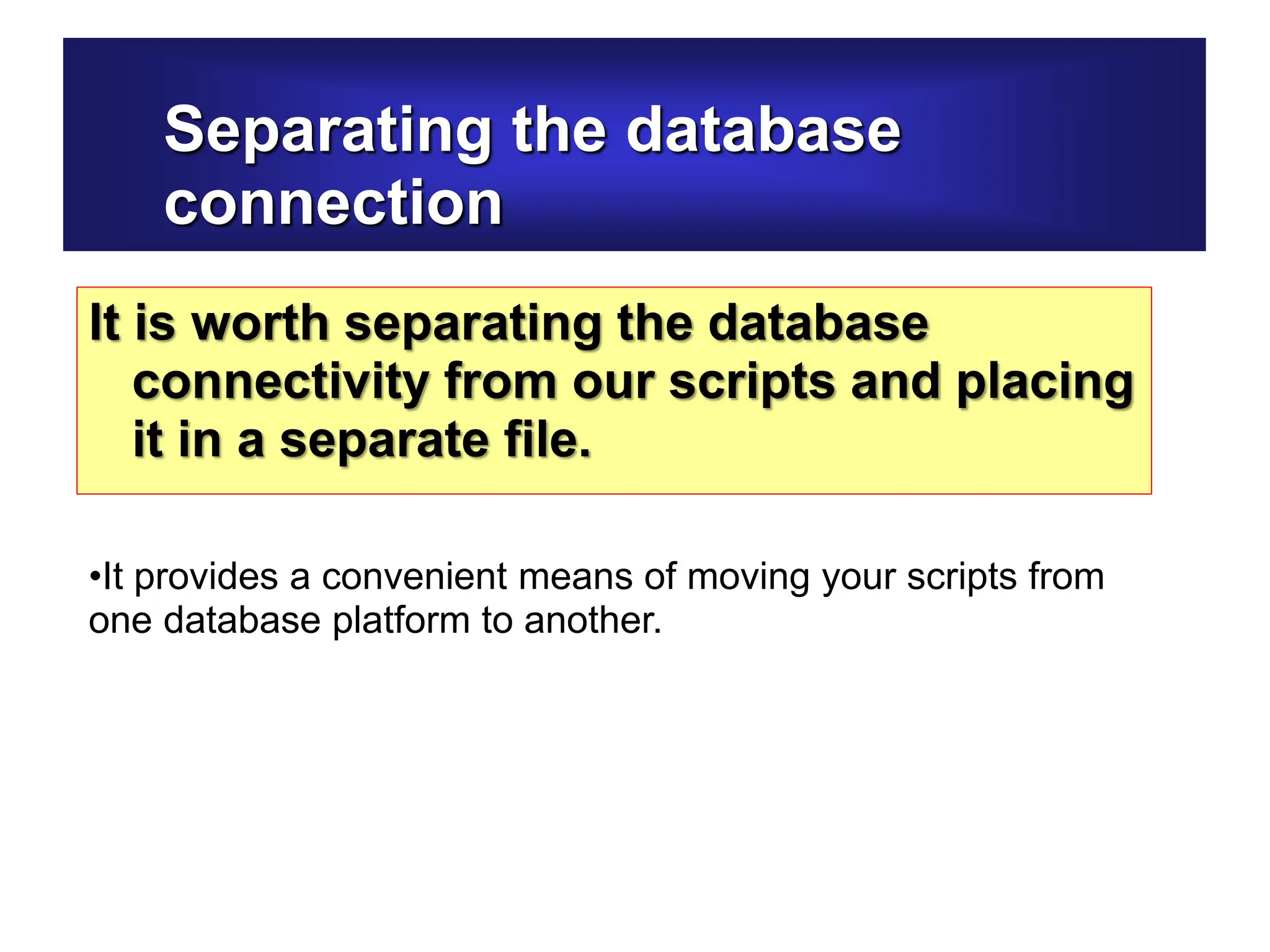
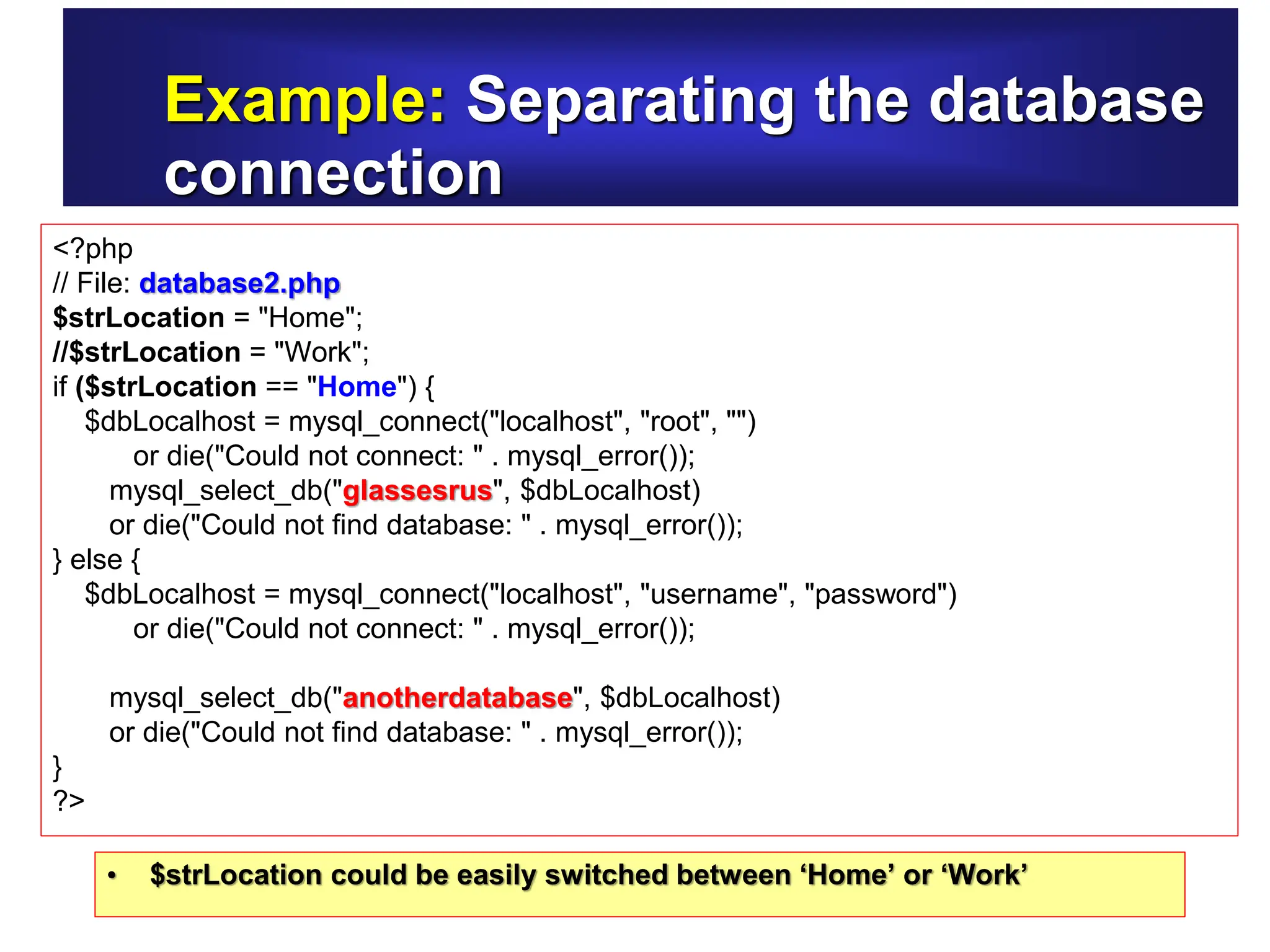

![Example: Displaying all customer
records
<?php
require_once("database2.php");
$dbRecords = mysql_query("SELECT * FROM customers", $dbLocalhost)
or die("Problem reading table: " . mysql_error());
while ($arrRecord = mysql_fetch_row($dbRecords)) {
echo "<p>" . $arrRecord[0] . " ";
echo $arrRecord[1] . " ";
echo $arrRecord[2] . " ";
echo $arrRecord[3] . "</p>";
}
?>
• The function returns false when the last record is returned; thus, stopping
the loop.
• Note, however, that the fields are referred to by using numbers – not very
easy to read and mistakes can be introduced.](https://image.slidesharecdn.com/lecture15-mysql-php1-231009122022-301f3bd2/75/Lecture-15-MySQL-PHP-1-ppt-59-2048.jpg)
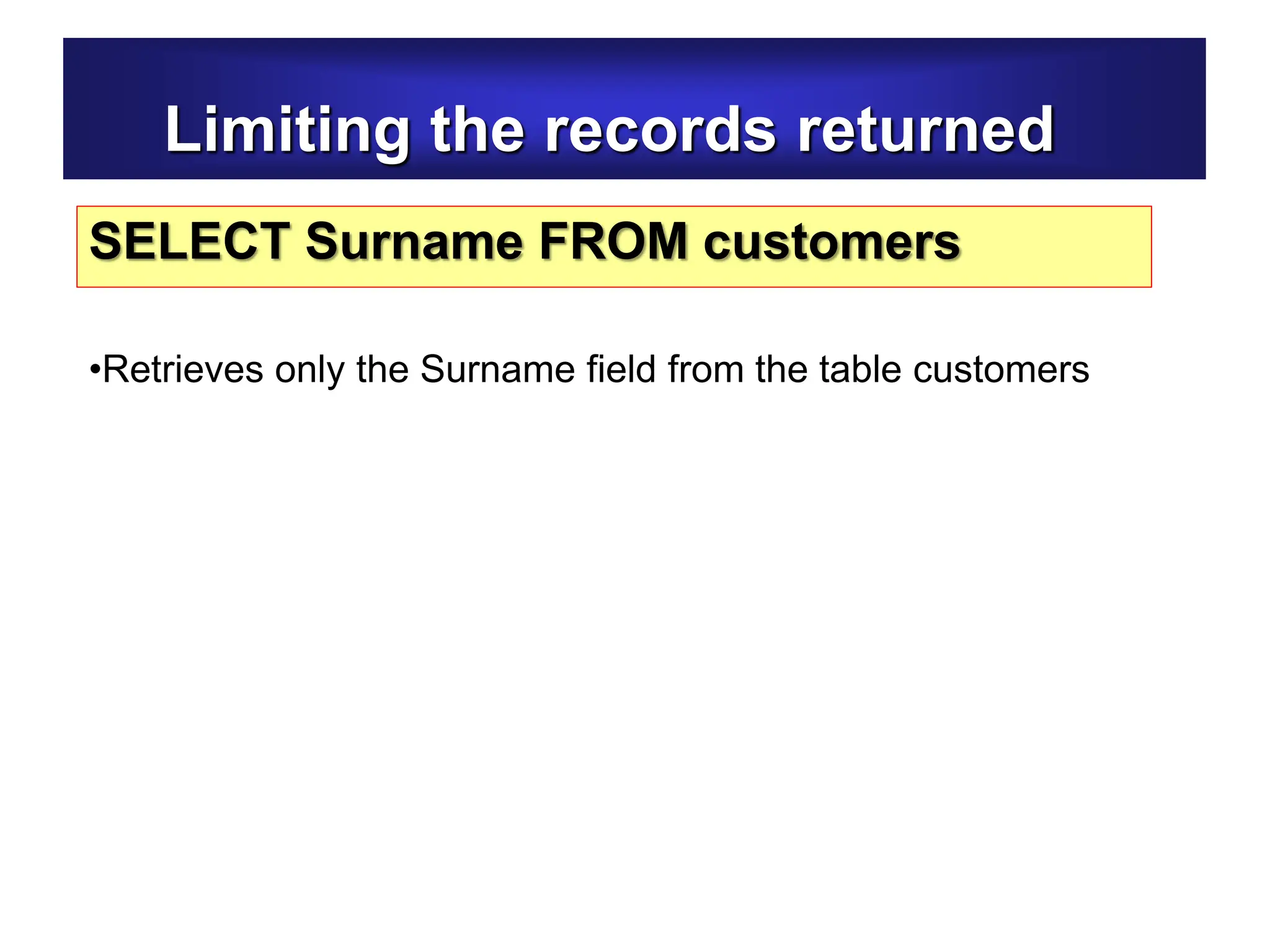
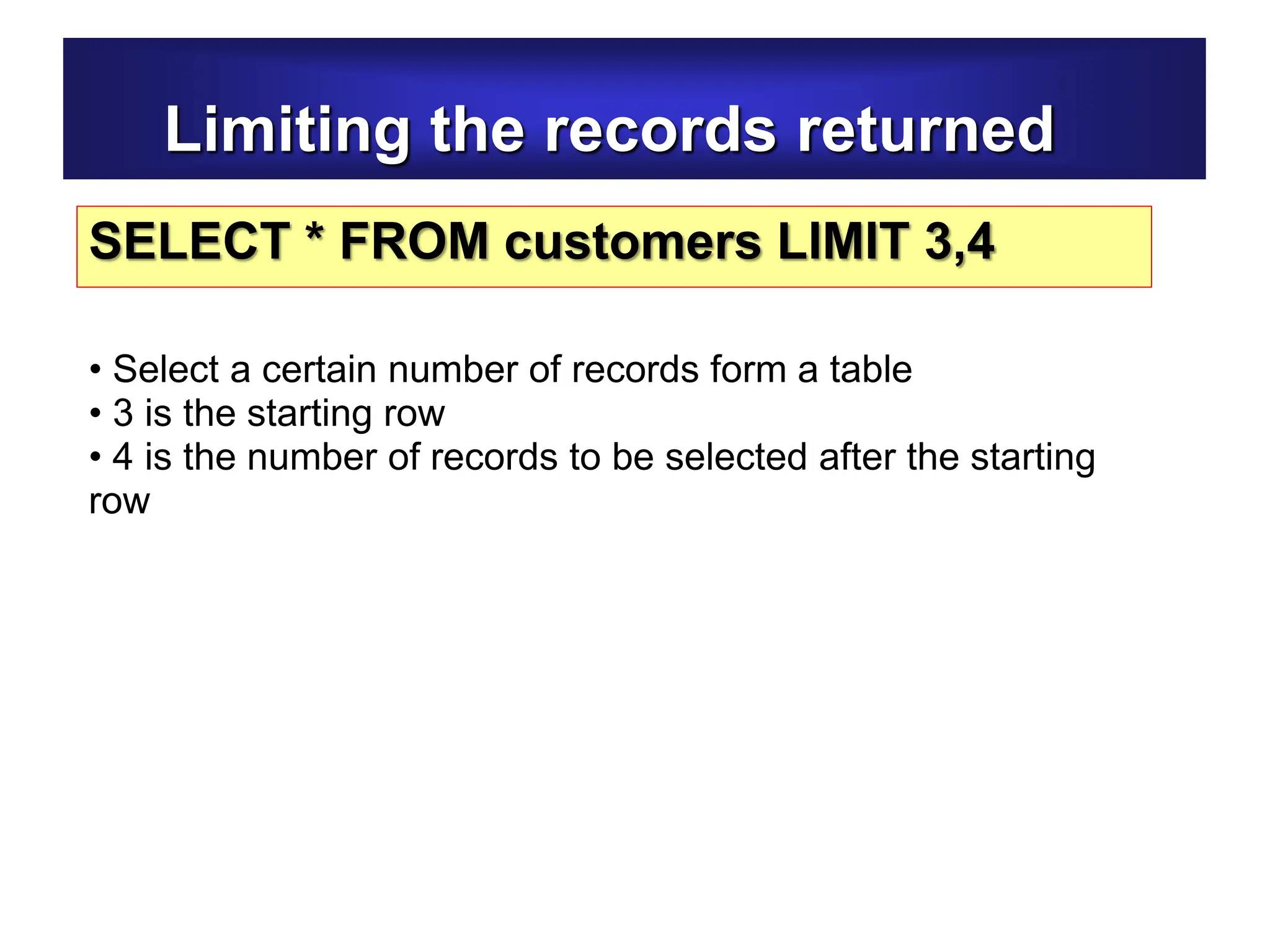
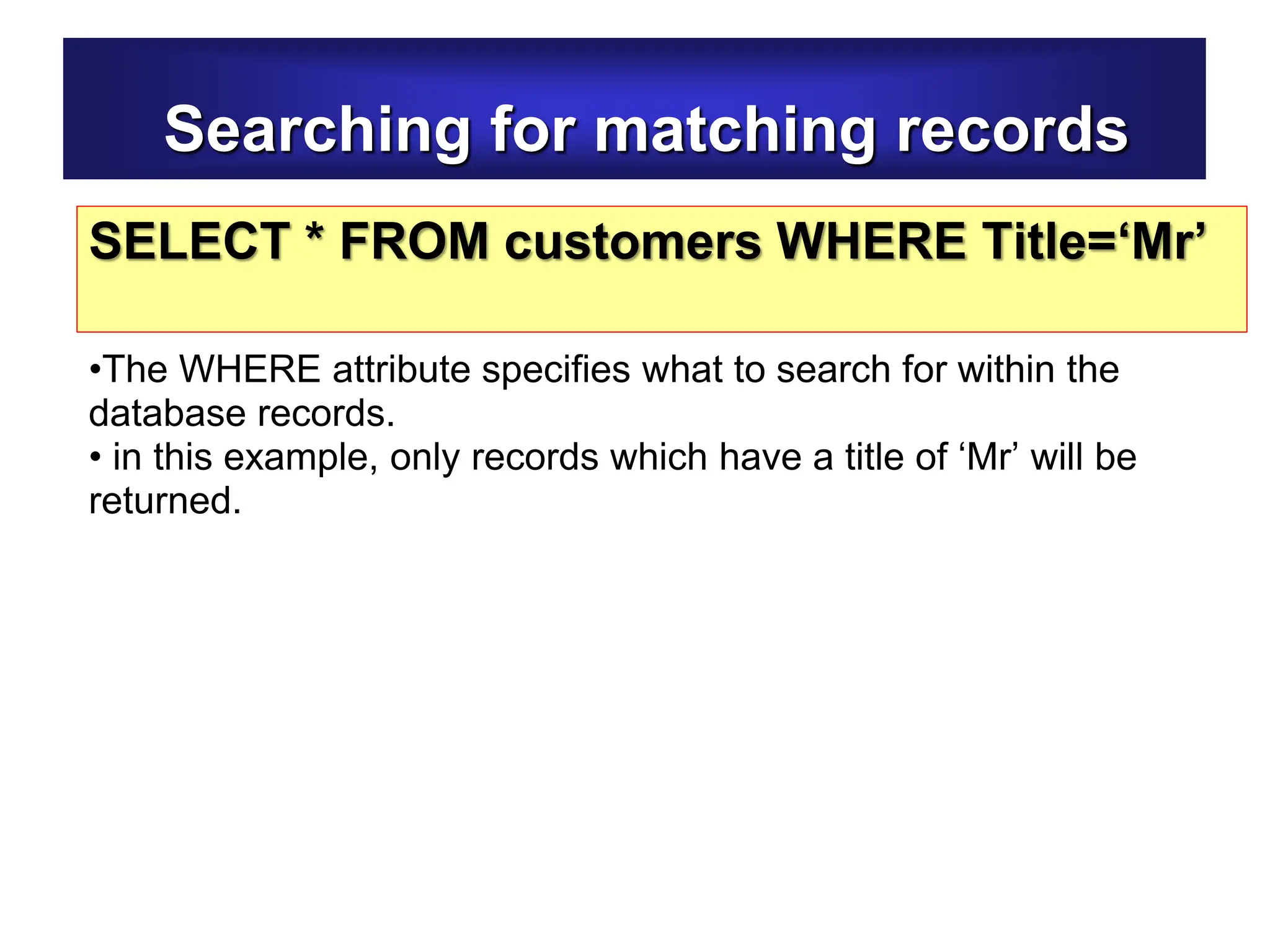
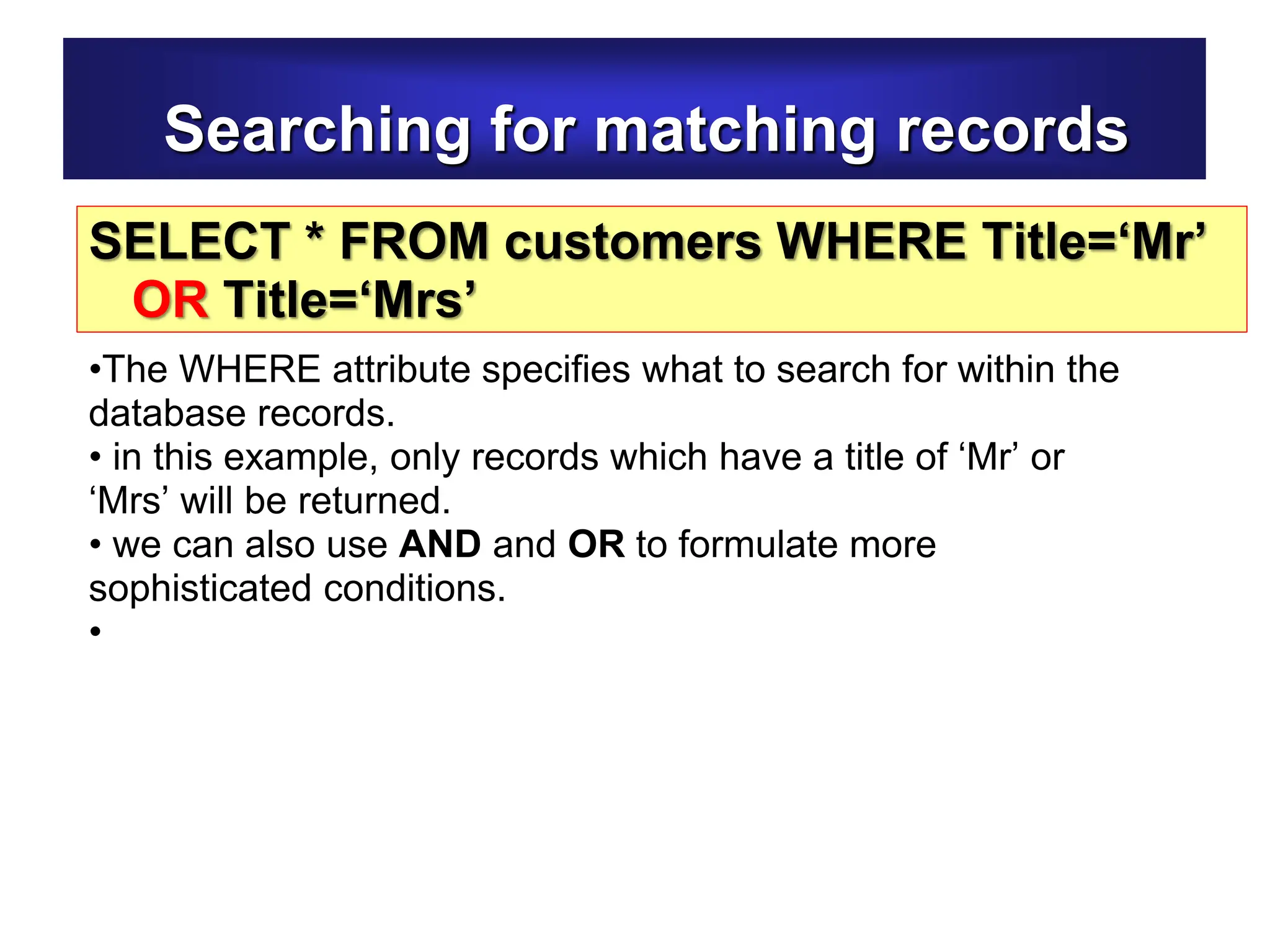
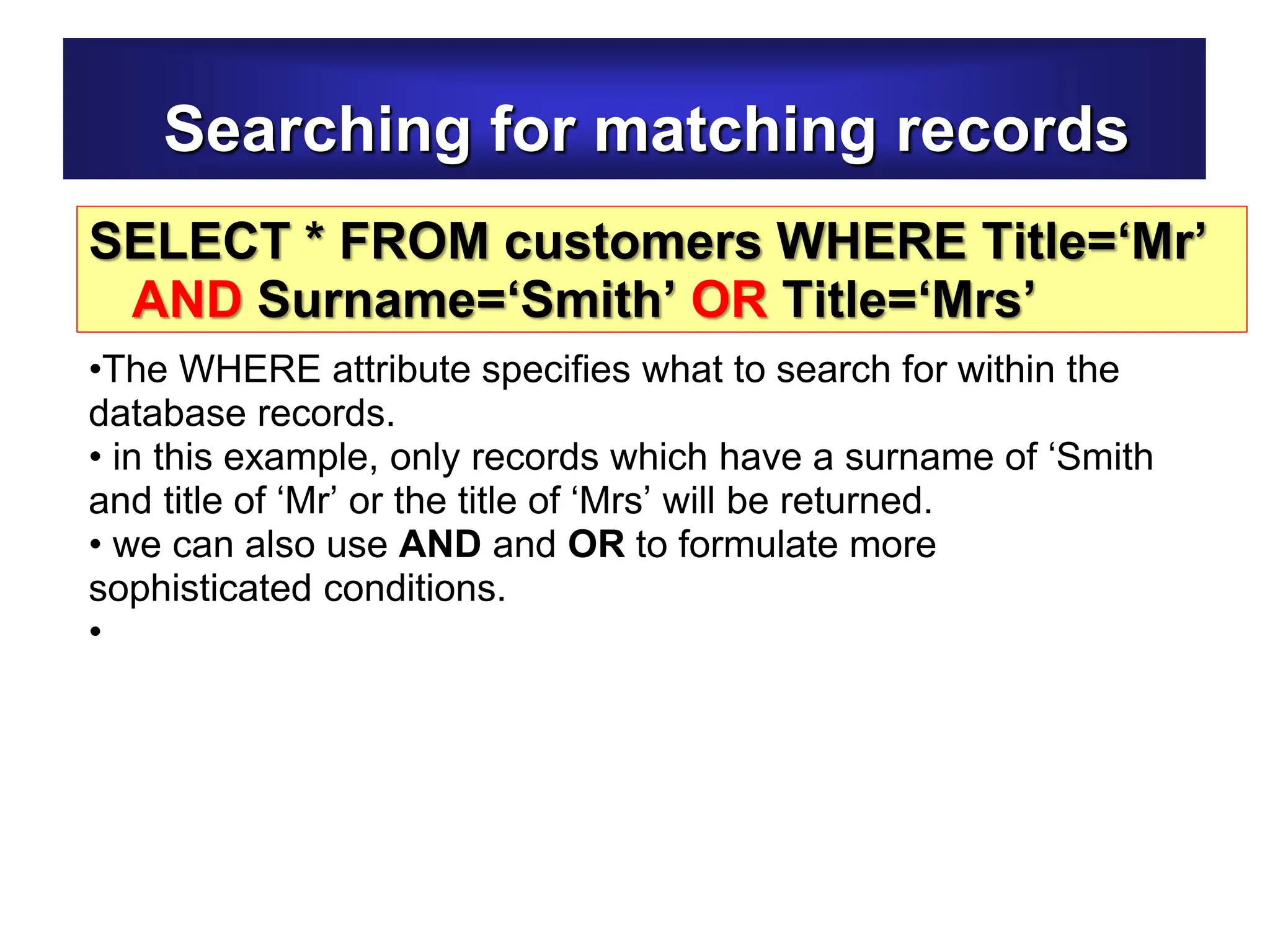

![Accessing Multiple Tables
Example15-13.php
<?php
// File: example15-13.php
require_once("database2.php");
$dbRecords = mysql_query("SELECT * FROM customers WHERE Title = 'Mrs'", $dbLocalhost)
or die("Problem reading table: " . mysql_error());
echo "<p>Customers:</p>";
while ($arrRecords = mysql_fetch_array($dbRecords)) {
echo "<p>" . $arrRecords["Id"] . " ";
echo $arrRecords["Title"] . " ";
echo $arrRecords["Surname"] . " ";
echo $arrRecords["Firstname"] . "</p>";
}
//...continued...](https://image.slidesharecdn.com/lecture15-mysql-php1-231009122022-301f3bd2/75/Lecture-15-MySQL-PHP-1-ppt-66-2048.jpg)
![Accessing Multiple Tables
Example15-13.php
//continuation...
$dbRecords = mysql_query("SELECT * FROM products WHERE Name = 'Wine Glass'",
$dbLocalhost)
or die("Problem reading table: " . mysql_error());
echo "<p>Products:</p>";
while ($arrRecords = mysql_fetch_array($dbRecords)) {
echo "<p>" . $arrRecords["Id"] . " ";
echo $arrRecords["Name"] . " ";
echo $arrRecords["Description"] . " ";
echo $arrRecords["Quantity"] . " ";
echo $arrRecords["Cost"] . "</p>";
}
?>](https://image.slidesharecdn.com/lecture15-mysql-php1-231009122022-301f3bd2/75/Lecture-15-MySQL-PHP-1-ppt-67-2048.jpg)
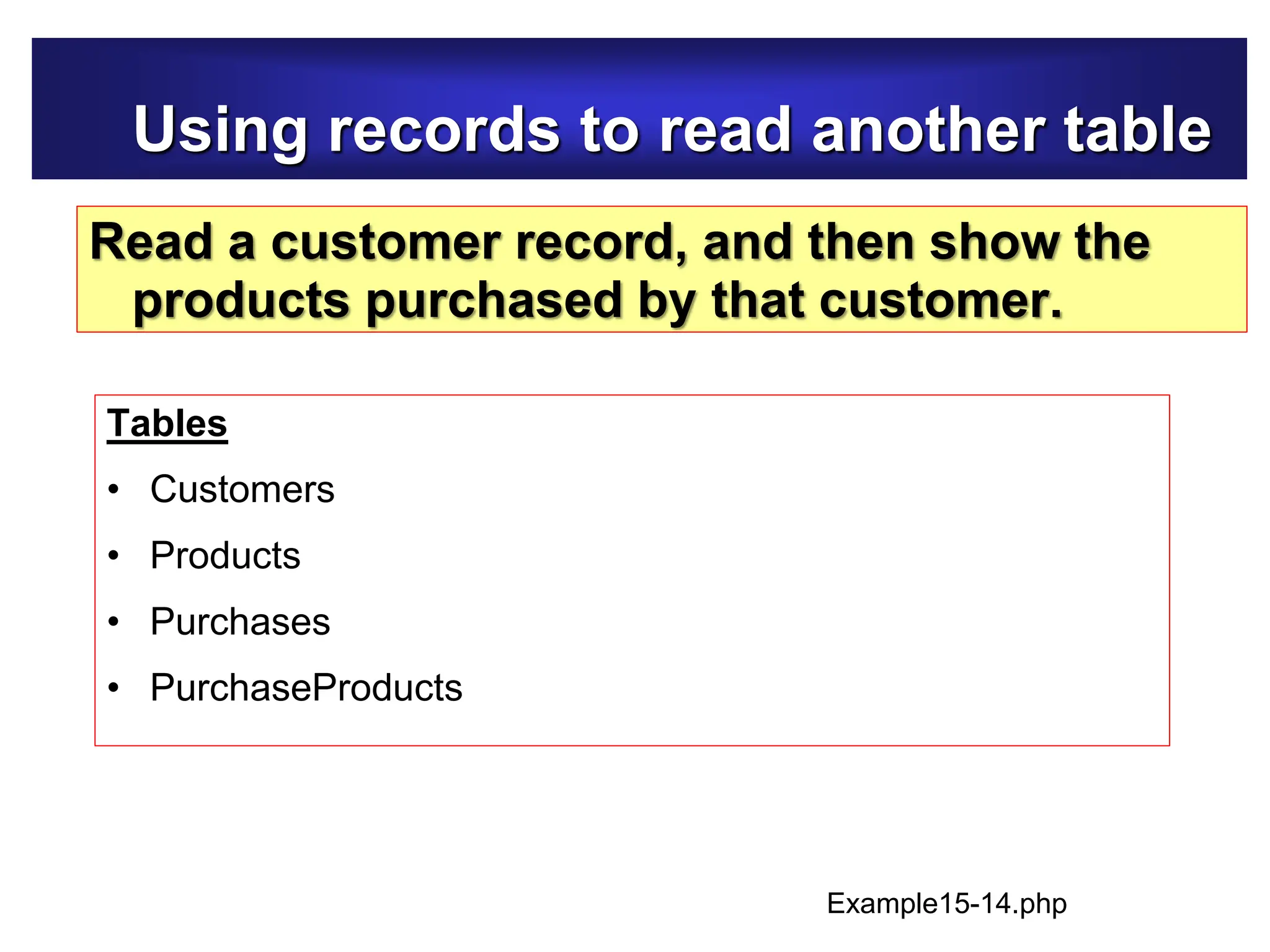
![Using records to read another table
Example15-14.php
...
$strSurname = "Jones";
$dbCustRecords = mysql_query("SELECT * FROM customers WHERE Surname = '$strSurname' ",...)
while ($arrCustRecords = mysql_fetch_array($dbCustRecords)) { //#1
$intId = $arrCustRecords["Id"];
//display customer’s details
$dbPurRecords = mysql_query("SELECT * FROM purchases WHERE customers_Id = '$intId'", ...)
while ($arrPurRecords = mysql_fetch_array($dbPurRecords)) {//#2
$intPurId = $arrPurRecords["Id"];
//display purchase date
$dbProRecords=mysql_query("SELECT * FROM purchaseProducts WHERE purchases_Id='$intPurId' ",..)
while ($arrProRecords = mysql_fetch_array($dbProRecords)) { //#3
$intProductId = $arrProRecords["products_Id"];
//display Quantity
$dbProductRecords = mysql_query("SELECT * FROM products WHERE Id = '$intProductId'",..)
$arrProductRecord = mysql_fetch_array($dbProductRecords);
//display product details
} #3
} #2
} //#1
BIRD’S EYEVIEW](https://image.slidesharecdn.com/lecture15-mysql-php1-231009122022-301f3bd2/75/Lecture-15-MySQL-PHP-1-ppt-69-2048.jpg)
![Using records to read another table
Example15-14.php
<?php
require_once("database2.php");
$strSurname = "Jones";
$dbCustRecords = mysql_query("SELECT * FROM customers WHERE Surname = '$strSurname'
", $dbLocalhost)
or die("Problem reading table: " . mysql_error());
while ($arrCustRecords = mysql_fetch_array($dbCustRecords)) {
$intId = $arrCustRecords["Id"];
echo "<p>Customer: ";
echo $arrCustRecords["Title"] . " ";
echo $arrCustRecords["Surname"] . " ";
echo $arrCustRecords["Firstname"] . "</p>";
$dbPurRecords = mysql_query("SELECT * FROM purchases WHERE customers_Id = '$intId'",
$dbLocalhost)
or die("Problem reading table: " . mysql_error());
Complete version](https://image.slidesharecdn.com/lecture15-mysql-php1-231009122022-301f3bd2/75/Lecture-15-MySQL-PHP-1-ppt-70-2048.jpg)
![Using records to read another table
Example15-14.php
while ($arrPurRecords = mysql_fetch_array($dbPurRecords)) {
$intPurId = $arrPurRecords["Id"];
echo "<p>Purchased On: ";
echo $arrPurRecords["Day"] . "/";
echo $arrPurRecords["Month"] . "/";
echo $arrPurRecords["Year"] . "</p>";
$dbProRecords= mysql_query("SELECT * FROM purchaseProducts WHERE purchases_Id='$intPurId' ",
$dbLocalhost)
or die("Problem reading table: " . mysql_error());
while ($arrProRecords = mysql_fetch_array($dbProRecords)) {
$intProductId = $arrProRecords["products_Id"];
echo "<p>" . $arrProRecords["Quantity"] . " ";
$dbProductRecords = mysql_query("SELECT * FROM products WHERE Id = '$intProductId'",
$dbLocalhost)
or die("Problem reading table: " . mysql_error());
$arrProductRecord = mysql_fetch_array($dbProductRecords);
echo $arrProductRecord["Name"] . " (" . $arrProductRecord["Description"] . ") at £";
echo $arrProRecords["Cost"] . " each.</p>";
}
}
}
?>
Example15-14.php
Complete version](https://image.slidesharecdn.com/lecture15-mysql-php1-231009122022-301f3bd2/75/Lecture-15-MySQL-PHP-1-ppt-71-2048.jpg)
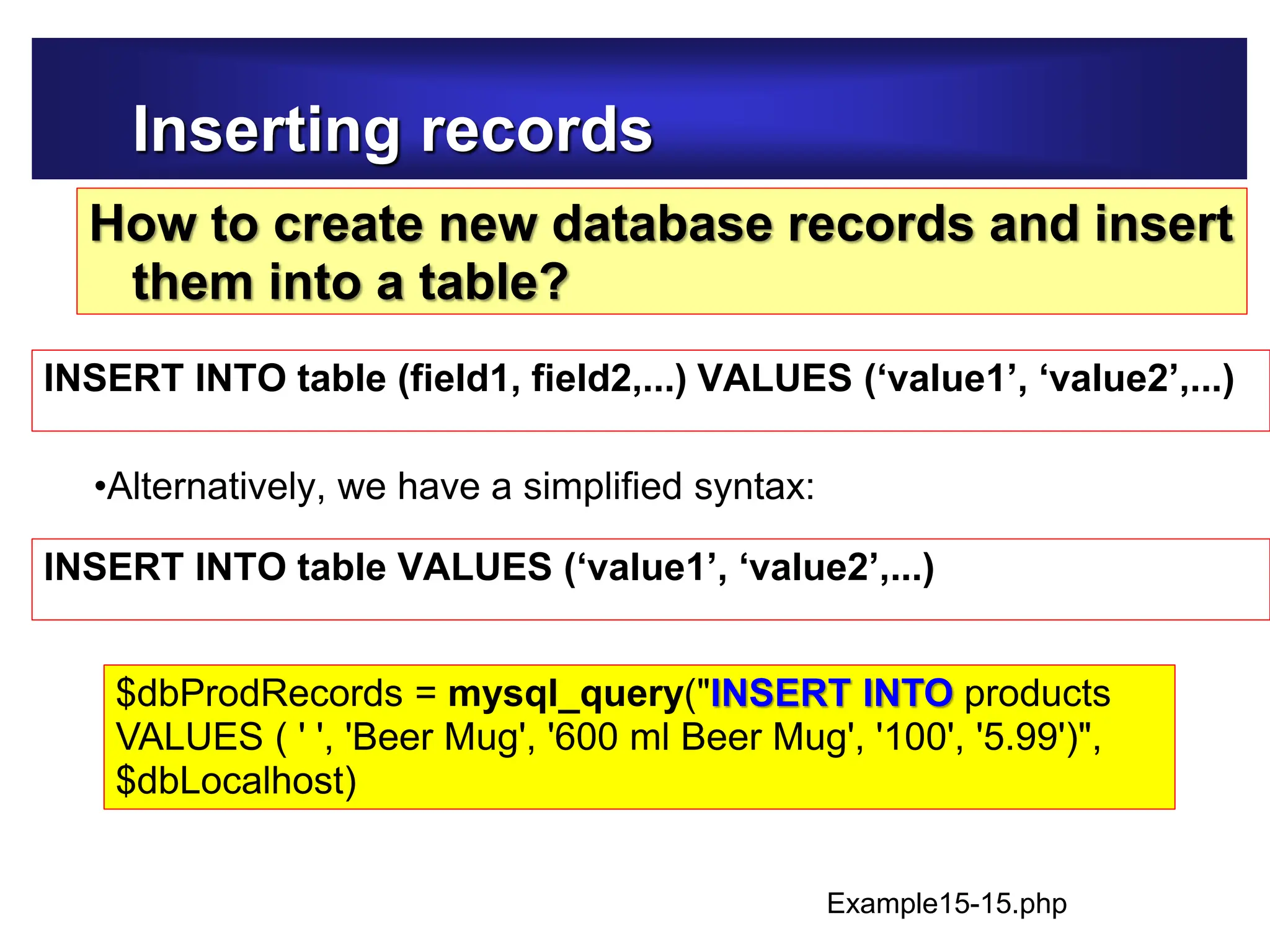
![Inserting records
Example15-14.php
<?php
// File: example15-15.php
require_once("database2.php");
$dbProdRecords = mysql_query("INSERT INTO products VALUES ('', 'Beer Mug', '600
ml Beer Mug', '100', '5.99')", $dbLocalhost)
or die("Problem writing to table: " . mysql_error());
$dbProdRecords = mysql_query("SELECT * FROM products", $dbLocalhost)
or die("Problem reading table: " . mysql_error());
while ($arrProdRecords = mysql_fetch_array($dbProdRecords)) {
echo "<p>" . $arrProdRecords["Id"] . " ";
echo $arrProdRecords["Name"] . " ";
echo $arrProdRecords["Description"] . " ";
echo $arrProdRecords["Quantity"] . " ";
echo $arrProdRecords["Cost"] . "</p>";
}
?> Example15-15.php](https://image.slidesharecdn.com/lecture15-mysql-php1-231009122022-301f3bd2/75/Lecture-15-MySQL-PHP-1-ppt-73-2048.jpg)
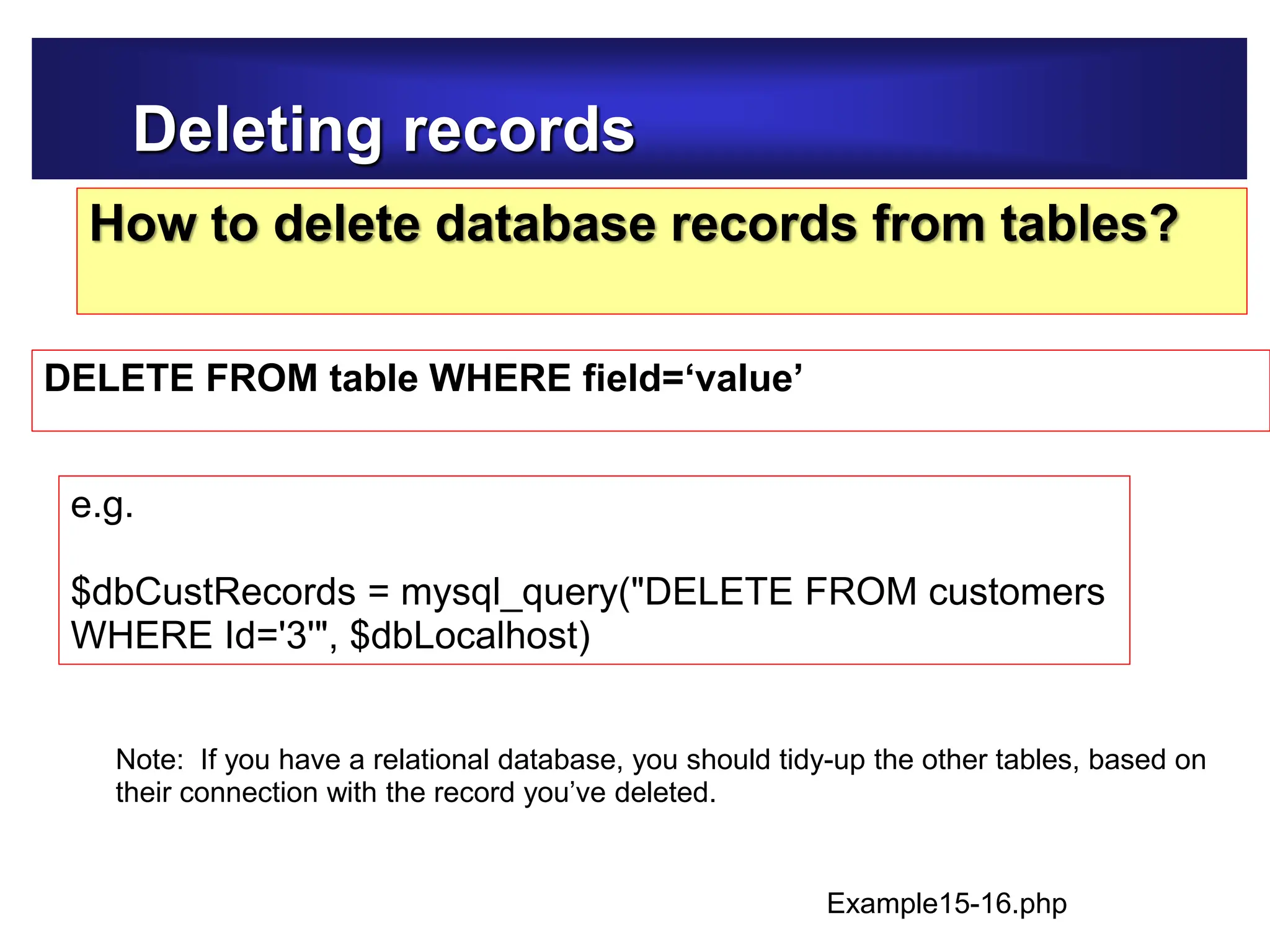
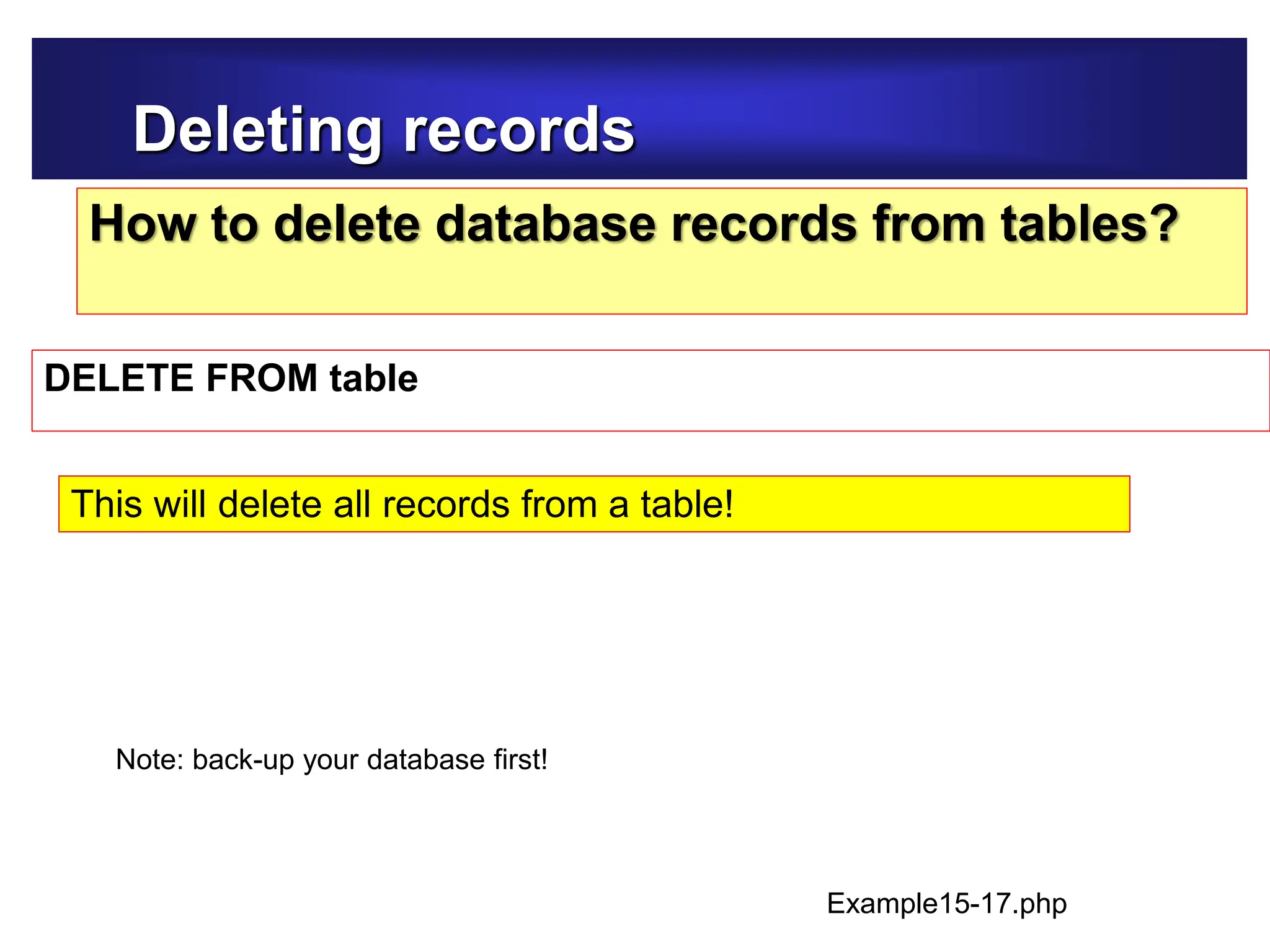
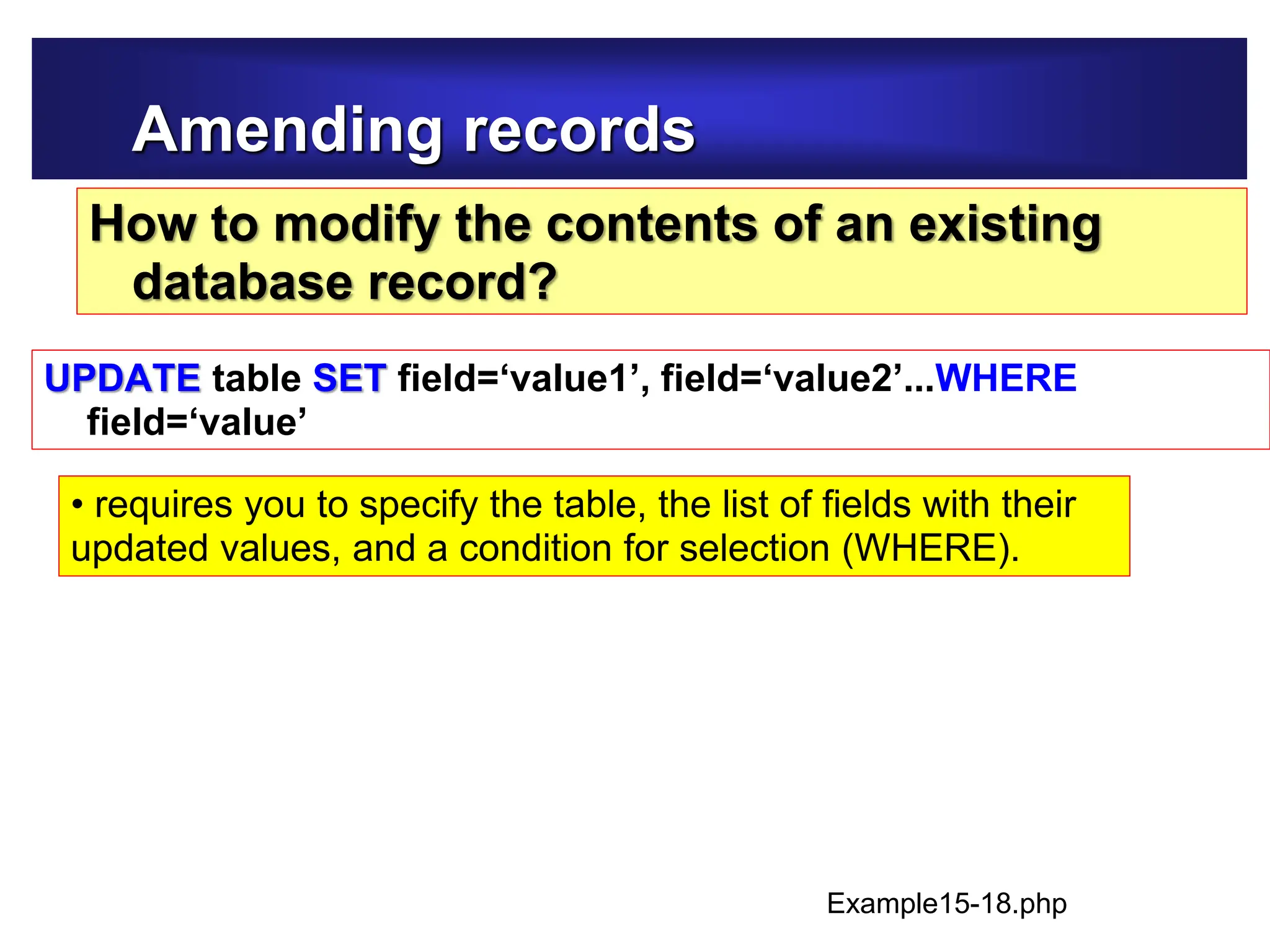
![Amending records
Example15-14.php
<?php
// File: example15-18.php
require_once("database2.php");
$dbCustRecords = mysql_query("UPDATE products SET Description='250 ml Tall
Glass' WHERE Id='6'", $dbLocalhost)
or die("Problem updating table: " . mysql_error());
$dbProdRecords = mysql_query("SELECT * FROM products", $dbLocalhost)
or die("Problem reading table: " . mysql_error());
while ($arrProdRecords = mysql_fetch_array($dbProdRecords)) {
echo "<p>" . $arrProdRecords["Id"] . " ";
echo $arrProdRecords["Name"] . " ";
echo $arrProdRecords["Description"] . " ";
echo $arrProdRecords["Quantity"] . " ";
echo $arrProdRecords["Cost"] . "</p>";
}
?> Example15-18.php](https://image.slidesharecdn.com/lecture15-mysql-php1-231009122022-301f3bd2/75/Lecture-15-MySQL-PHP-1-ppt-77-2048.jpg)
